M&TT Colloquia 2023-2024
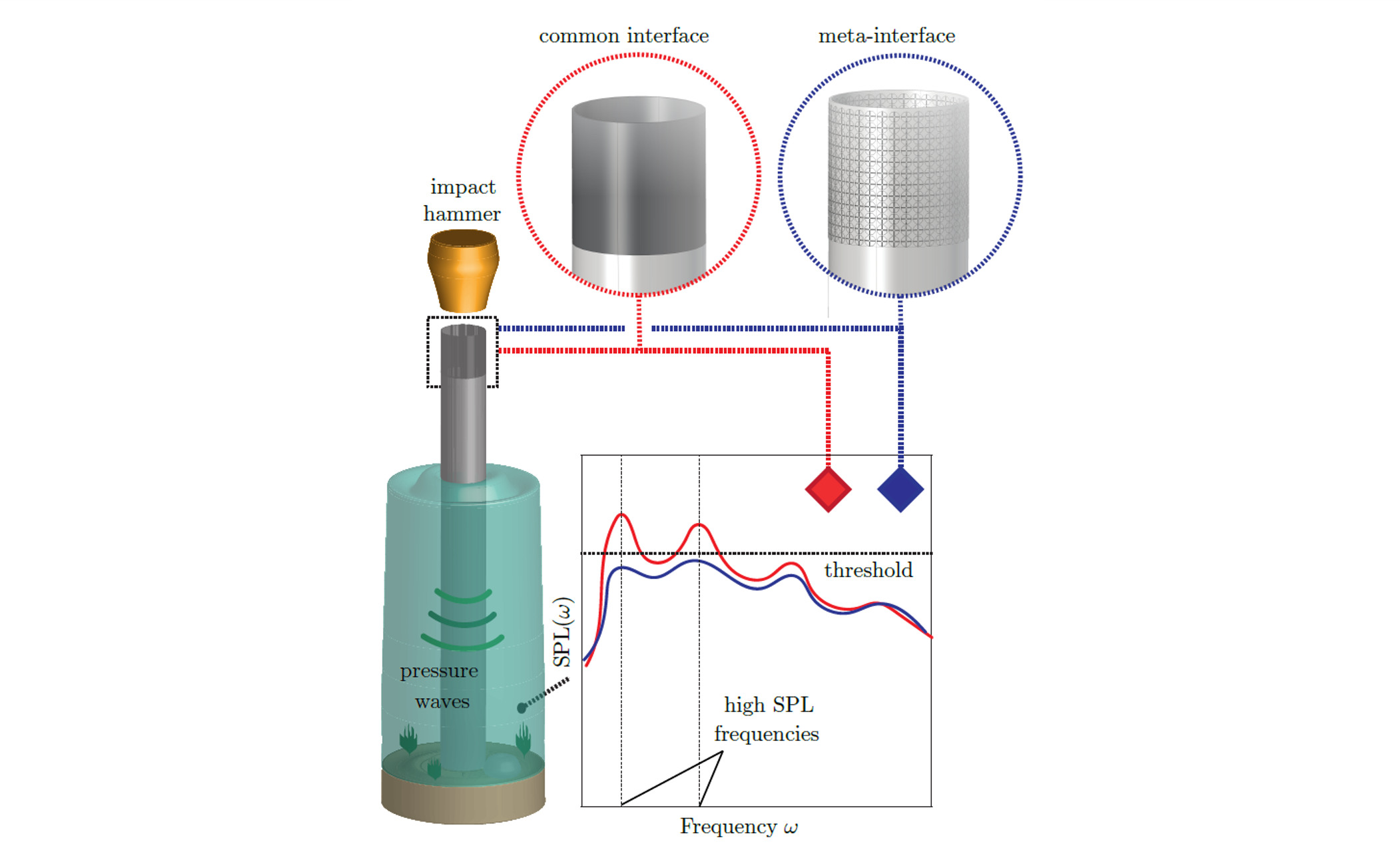
A graded metamaterial-based cushion for broadband noise mitigation of impact-driven offshore monopiles
Ana Azevedo Vasconcelos June 20th, 2024, 16h00, Lecture Hall F
The next generation of offshore wind farms will consist of larger wind turbines with higher power capacity. To withstand the upcoming wind turbines into the offshore environment, new foundations with larger sizes are also required. Monopiles are commonly used as wind farms foundations and are installed into the seabed through the blows of an impact hammer. During the pile driving process, the pile wall vibrates, which results in high underwater noise emission in frequency ranges that are harmful to marine life. Several noise mitigation systems were developed to reduce the underwater noise, especially in frequency ranges around 1000 Hz. However, the increase of monopiles' diameter can also induce high noise emission in frequency ranges lower than 1000 Hz. For the existent noise mitigation systems, the attenuation of low frequency noise is not straightforward, which may require the combination of different systems to attain enough noise reduction. To efficiently mitigate low frequency noise, this work proposes a new metamaterial-based cushion formed by graded spiral resonators that will mitigate the energy coming from distinct monopile's vibration modes. The findings of this work open the doors to the development of new noise mitigation systems that are more indicated for the upcoming impact-driven offshore monopiles.
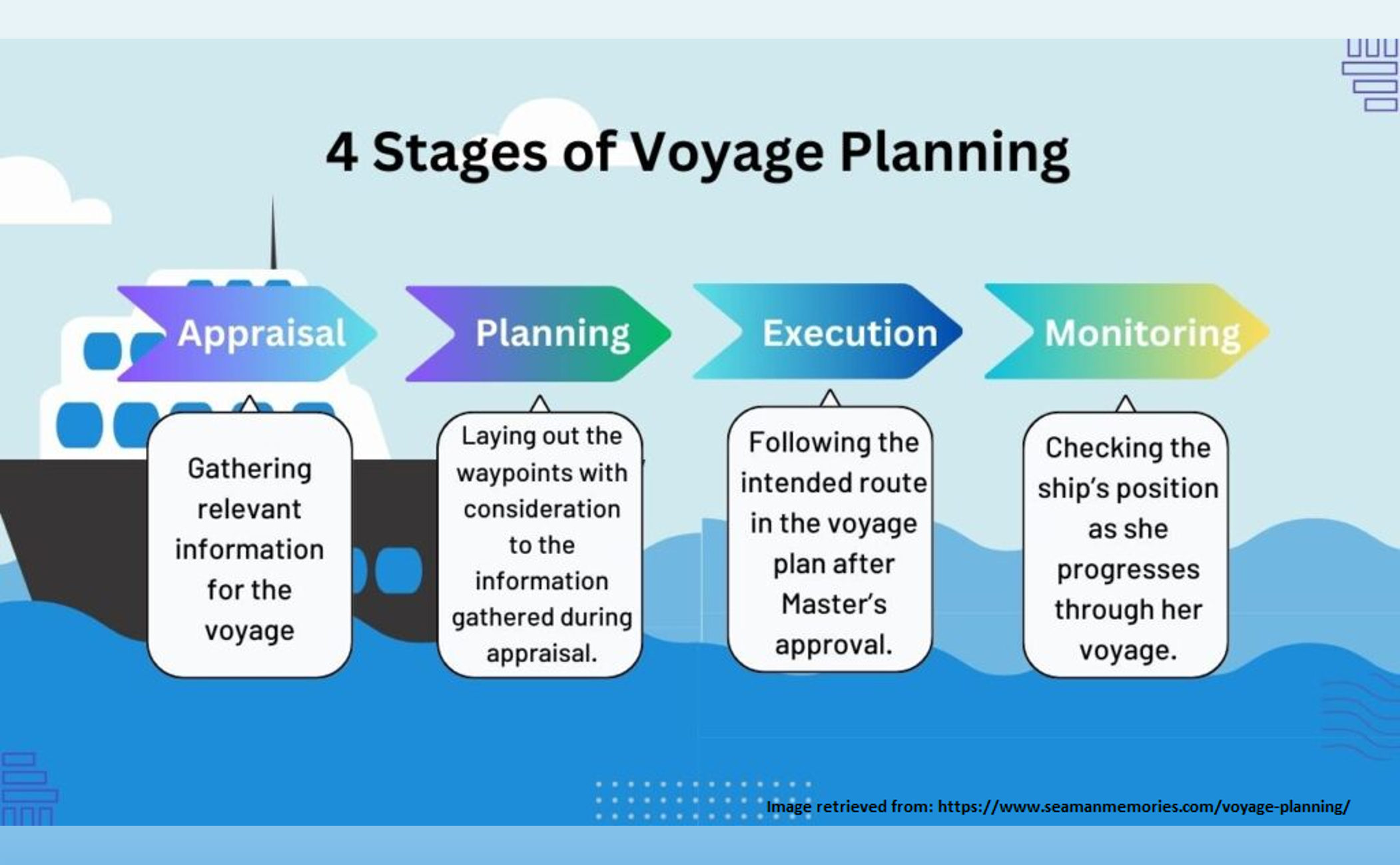
Energy-Efficient Speed Optimization for Inland Vessels Considering Dynamic Waterway Conditions
Simeon Slagter June 20th, 2024, 16h00, Lecture Hall F
The inland waterway transport sector is facing increasingly stringent legislation to reduce emissions and improve energy efficiency. Speed planning methods are an attractive option as they provide energy-efficient, timely and emission-reducing voyage planning for ships. However, current methods do not consider the dynamic conditions of the waterways, such as water depth, current speed and traffic conditions. Due to these dynamic navigational conditions the static speed planning methods do not guarantee optimality, nor do they satisfy the constraints of the optimization problem throughout the journey. We propose an optimization structure that is based on the Model Predictive Control algorithm, which uses the most current information on water depth, water speed and expected delays to re-optimize the speed planning throughout the journey. The method proves useful from a logistical, energy, and safety perspective.
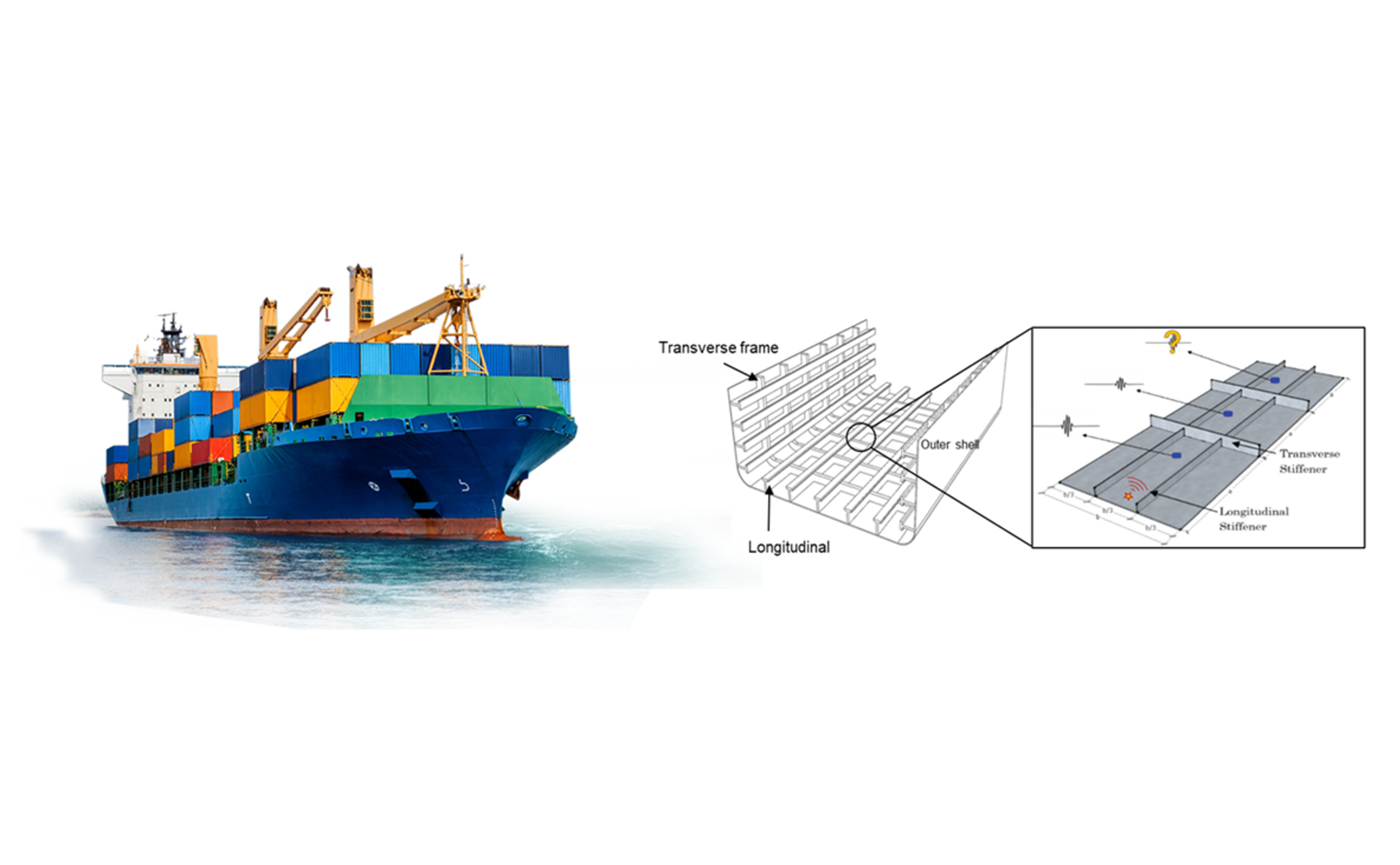
Acoustic Emission Sensing for Informed Maintenance of Ship Structures
Cecilia Saccone June 6th, 2024, 16h00, Lecture Hall F
Naval vessels are valuable national assets that are expensive to build and maintain. Predictive maintenance is crucial to enhance their efficiency and operability, and to extend their service life. Fatigue is regarded as one of the main degradation modes affecting the structural integrity of ship structures. Conventional non-destructive techniques to assess the structural integrity of ships consist of time-consuming, costly, and physically demanding procedures. This research deals with the development of an Acoustic Emission (AE) monitoring methodology to detect and characterise fatigue damage in ship structures under operational conditions.

Dynamic modelling of internal combustion engines running on alternative fuels
Jasper Vollbrandt May 2nd, 2024, 16h00, Lecture Hall F
The global shipping industry is at a crucial juncture, facing an urgent need to reduce greenhouse gas emissions in the short to medium term to mitigate climate change. A shift towards alternative fuels is imminent, necessitated by the limitations in current fuel cell and battery technology in terms of power density. Currently, the most promising candidates are hydrogen, ammonia, and methanol. However, compared to marine diesel engines, engines running on alternative fuels limit the dynamic performance to assure a stable combustion process and prevent knocking and misfire. This research focusses on the complex dynamic interaction between the gas-path and the in-cylinder process of marine engines on alternative fuels. With a combination of physical experiments and engine simulations, we try to understand what enables and limits dynamic performance. During my presentation I will give some background information, talk about the challenges of combining physical and simulation experiments, and show first results.
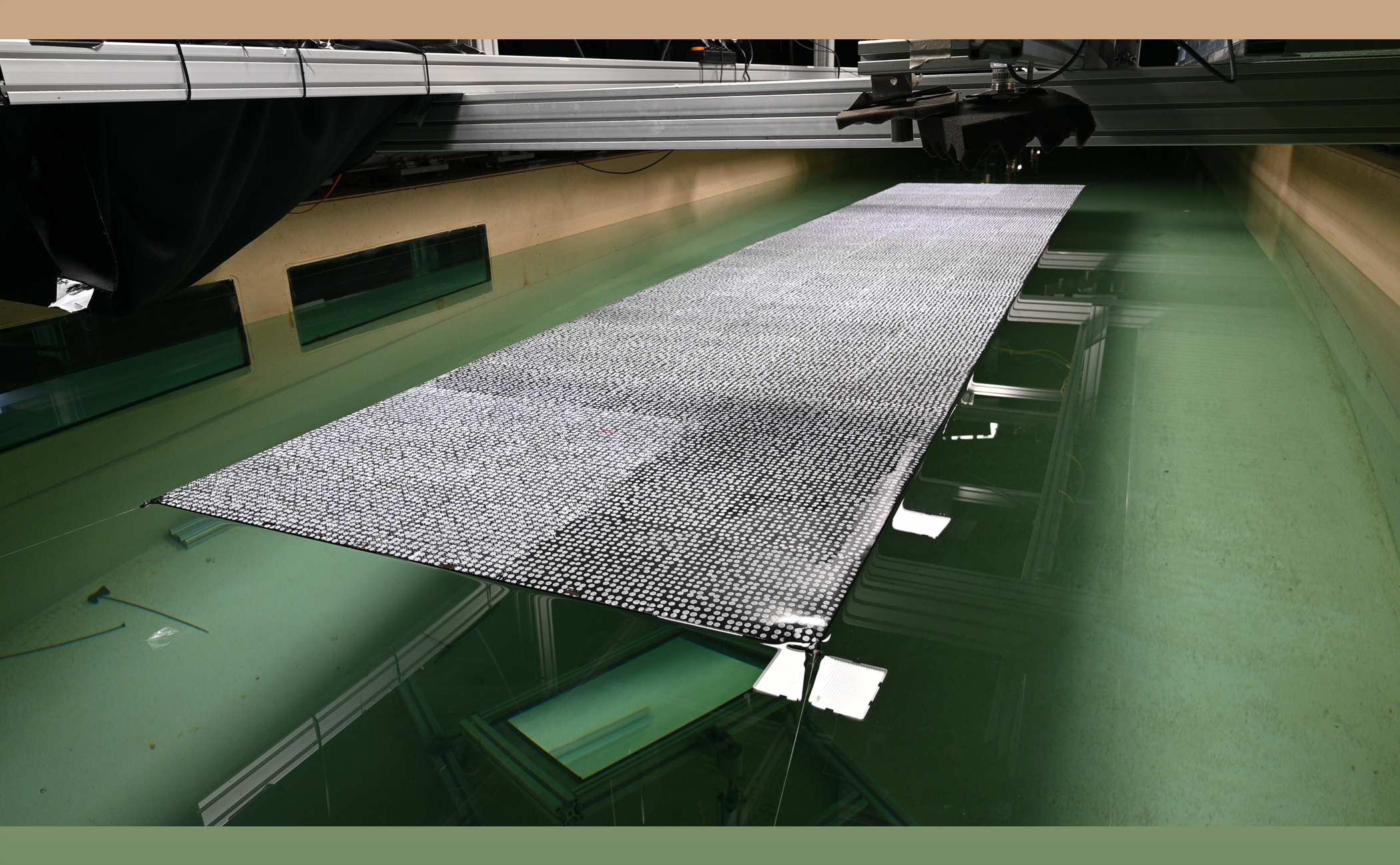
Experimental Wave-Structure Interaction of membrane-type Floating Photovoltaics
Hanna Pot May 2nd, 2024, 16h00, Lecture Hall F
Membrane-type support structures offer a promising avenue for reducing construction costs of offshore floating photovoltaic (PV) systems, potentially enhancing economic viability compared to traditional rigid supports. However, this type of structure is yet scarcely researched, such that hydrodynamics, wave-structure interactions and mooring loads are hard to quantify. To obtain a deeper understanding of the dynamic motion behaviour of these systems, our research focuses on the experimental quantification of mooring loads and the dynamic response of membrane structures under wave action. Wave tank experiments are conducted using a 5-meter-long neoprene model to simulate wave response. The model's deflections are captured using Digital Image Correlation, a stereovision technique that allows for precise full-field deformation analysis. Preliminary results of these experiments are presented.
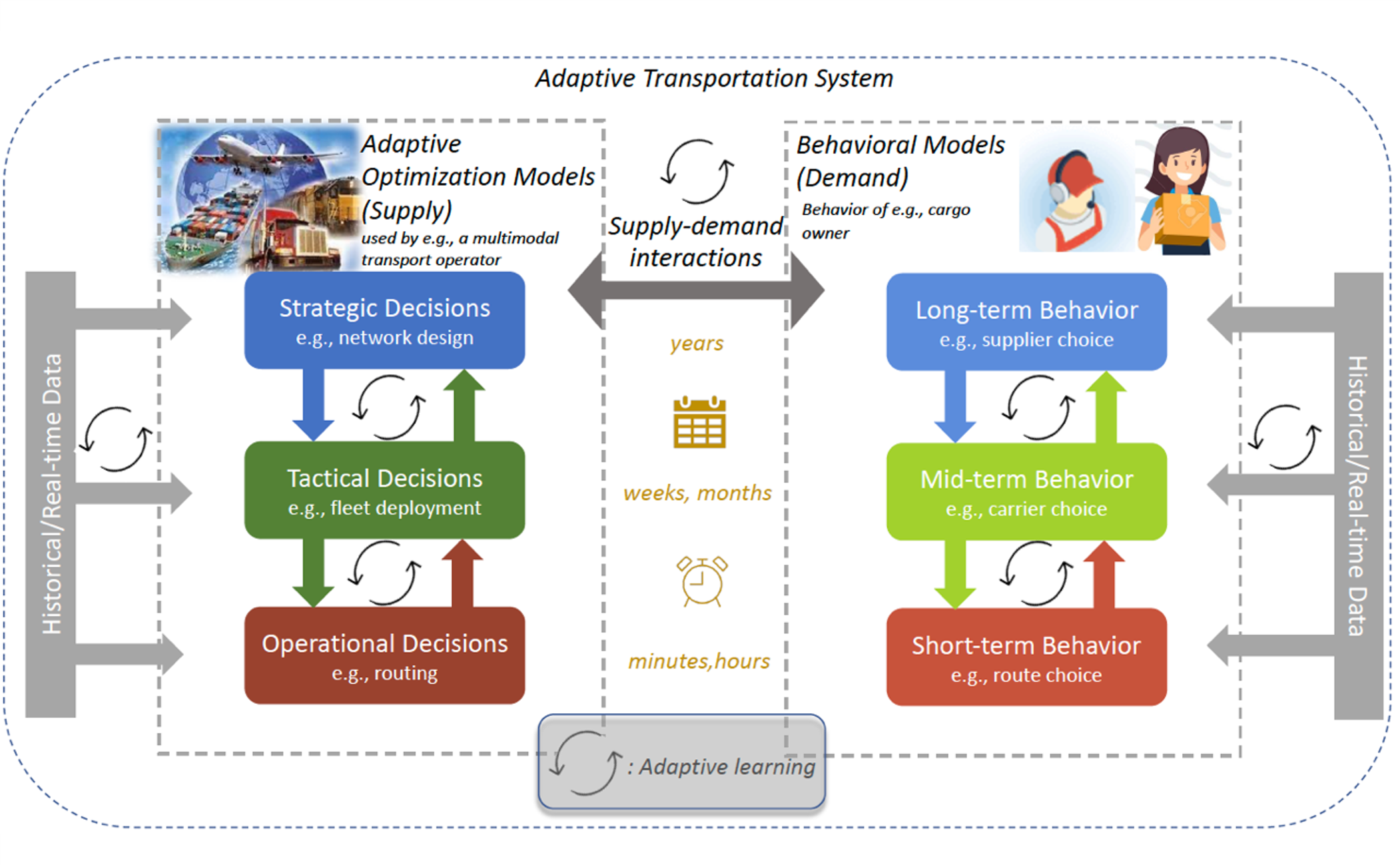
Adaptive Transportation and Logistics through Operations Research, Behavioral Modeling and Machine Learning
Bilge Atasoy April 11th, 2024, 16h00, Lecture Hall F
Operations Research, Behavioral Modeling and Machine Learning need to work hand in hand to reach adaptive transport systems. The intersection between these methodologies enable to have (1) a predictive decision making towards robustness (2) a user-centric nature for better incorporation of preferences (3) an adaptive system that continuously evolve towards better decisions and better representation of user behavior. In this talk I will provide examples across different applications from last-mile deliveries to intermodal transport.
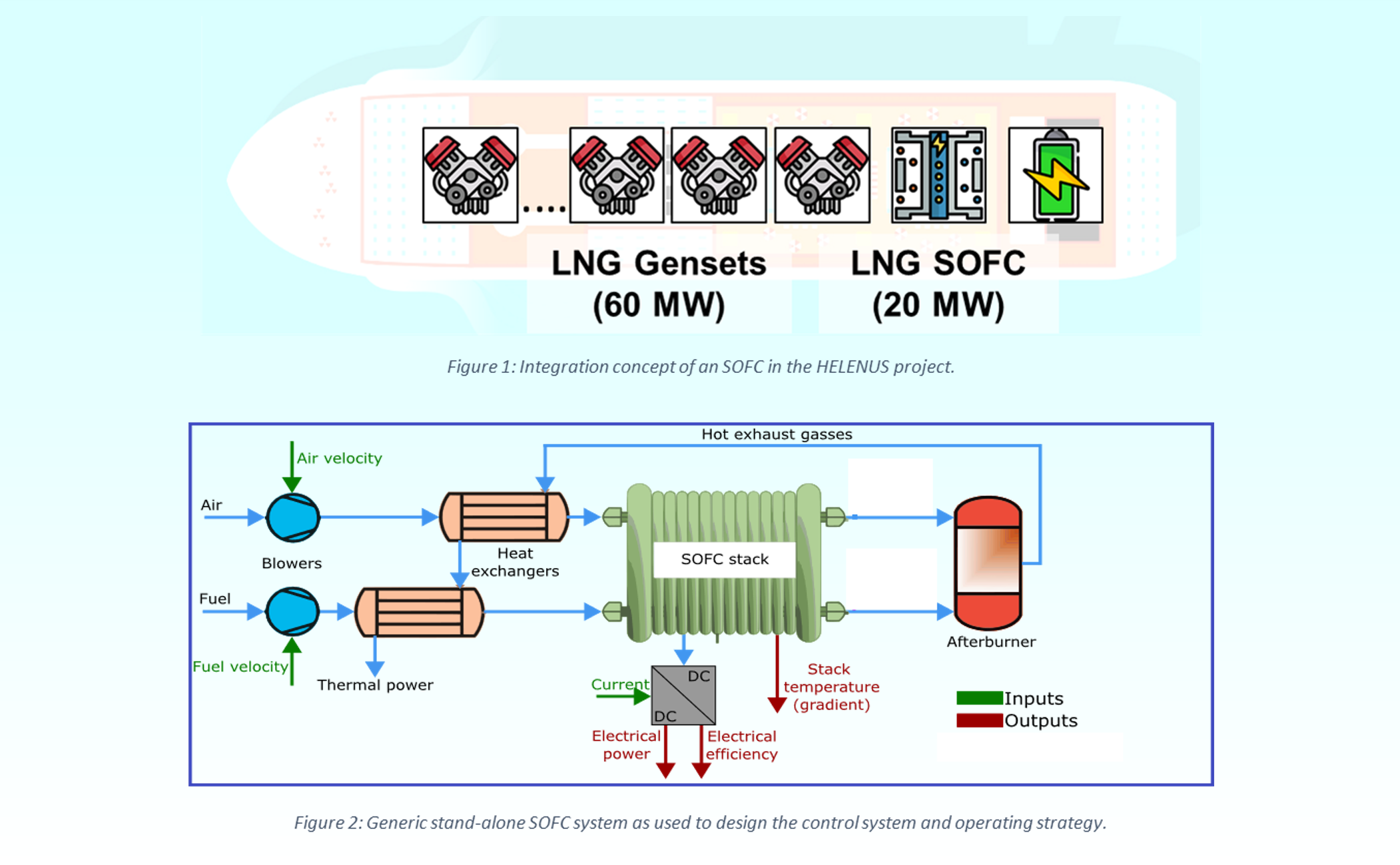
Thermal Stress-Aware Power Modulation for Solid Oxide Fuel Cell Systems through Model Predictive Control
Matthis de Lange April 4th, 2024, 16h00, Lecture Hall F
To mitigate polluting emissions in the maritime sector, Solid Oxide Fuel Cells (SOFC) are being explored as alternative power sources for vessels as they offer improved fuel conversion efficiency and reduced emissions. However, SOFCs encounter challenges related to slow power regulation, due to implicit constraints imposed by the need to limit thermal stress in the cells. Thermal stress can potentially damage the cell stack, thus efficient and safe control strategies are essential for the successful integration of SOFCs onboard a vessel. In previous research, these implicit constraints restrict the power modulation either by restricting the power reference or via a rate limit on the electrical current. In this research, we propose to address this explicitly by integrating thermal stress considerations, specifically spatial temperature gradients, into the control strategy using a Model Predictive Control (MPC) approach. This allows us to dynamically regulate the SOFC within the spatial temperature gradient constraints, enhancing the SOFC’s ability to track a time-varying power demand.
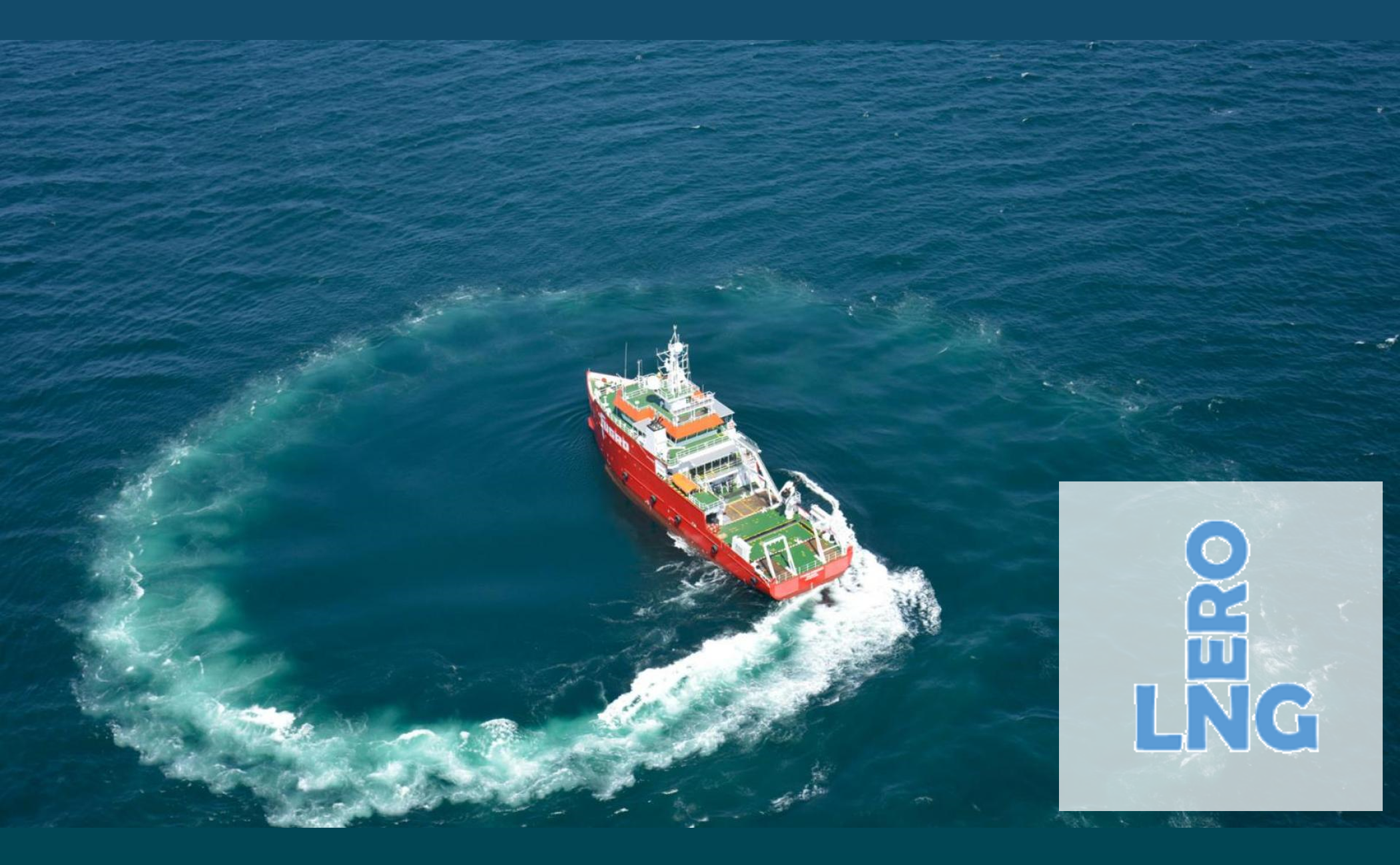
Ship based carbon capture systems – The LNG-Zero project
Wieger Peet April 4th, 2024, 16h00, Lecture Hall F
The importance of reducing the harmful emissions from vessel is clear. But in order to reach the goals set by the IMO we need to come up with new solutions. LNG-Zero is an ambitious research project that aims to develop technologies and strategies to drastically reduce the emissions from LNG powered vessels, making the shipping industry more sustainable. The main focus of the LNG-Zero project is on accelerating a novel technology for reducing the GHG emissions and NOx on LNG fuelled vessels. In order to reach the low levels of emissions set in this project, a comprehensive cleaning step of the exhaust gas has to be performed. During my presentation I will tell more about the goals of the project, the technologies that are being used/developed and what we are doing to support the project.
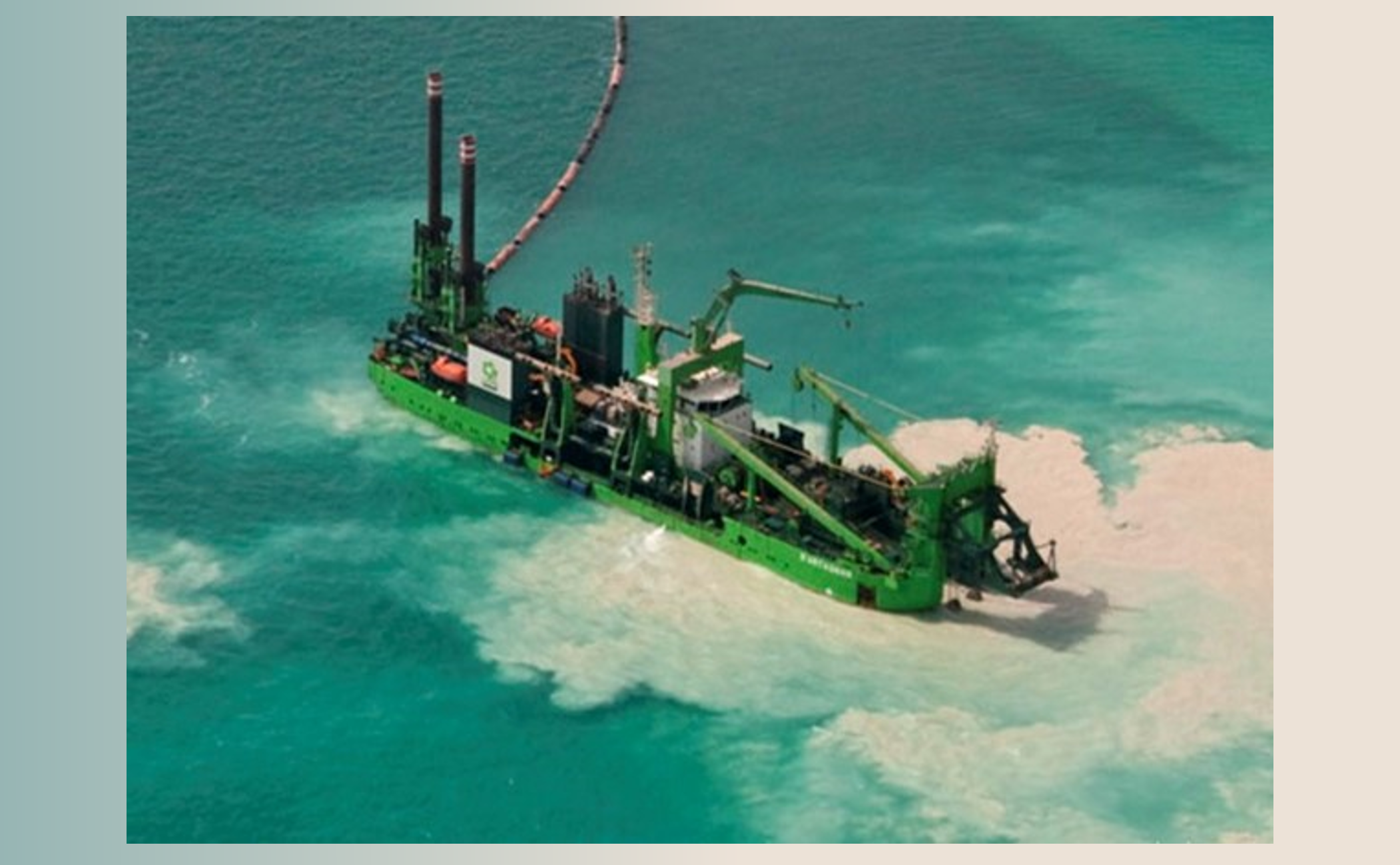
Sediment Plumes Generated by Cutter Suction Dredgers
Mosaab Mahgoub March 21st, 2024, 16h00, Lecture Hall G
Dredging-induced sediment plumes can cause severe damage to the aquatic environment: turbidity-related light reduction, smothering of sensitive habitats, and contaminant transport in case of environmental dredging. Cutter suction dredger (CSD) is the second main vessel utilized in the dredging industry. The main component of CSD is the cutter head, the role of the cutter head is to disintegrate (cut) the soil from the bed of the waterbody and mix it with water and then the soil-water mixture is transported as a slurry. The dynamic actions of the cutter head is the main trigger of sediment plumes generated during the operation of CSD. The near-field environment of the cutter head is very complex and sediment is released with different mechanisms. However, the common procedure followed in the dredging industry to quantify the sediment release rate (source-term) by CSD for the Environmental Impact Assessment (EIA) purposes is very simple and does not reflect the cutter head near-field dynamics, which causes a lot of uncertainties. Accurate prediction of the CSD source-term is essential for a trustable EIA and requires a full understanding of the cutter head near-field environment, which is still not achieved. My PhD research is to investigate the cutter head near-field environment and analyze its related sediment resuspension mechanisms for the objective of developing better source-term estimation model for CSD. My research methodology includes both numerical and experimental modelling.
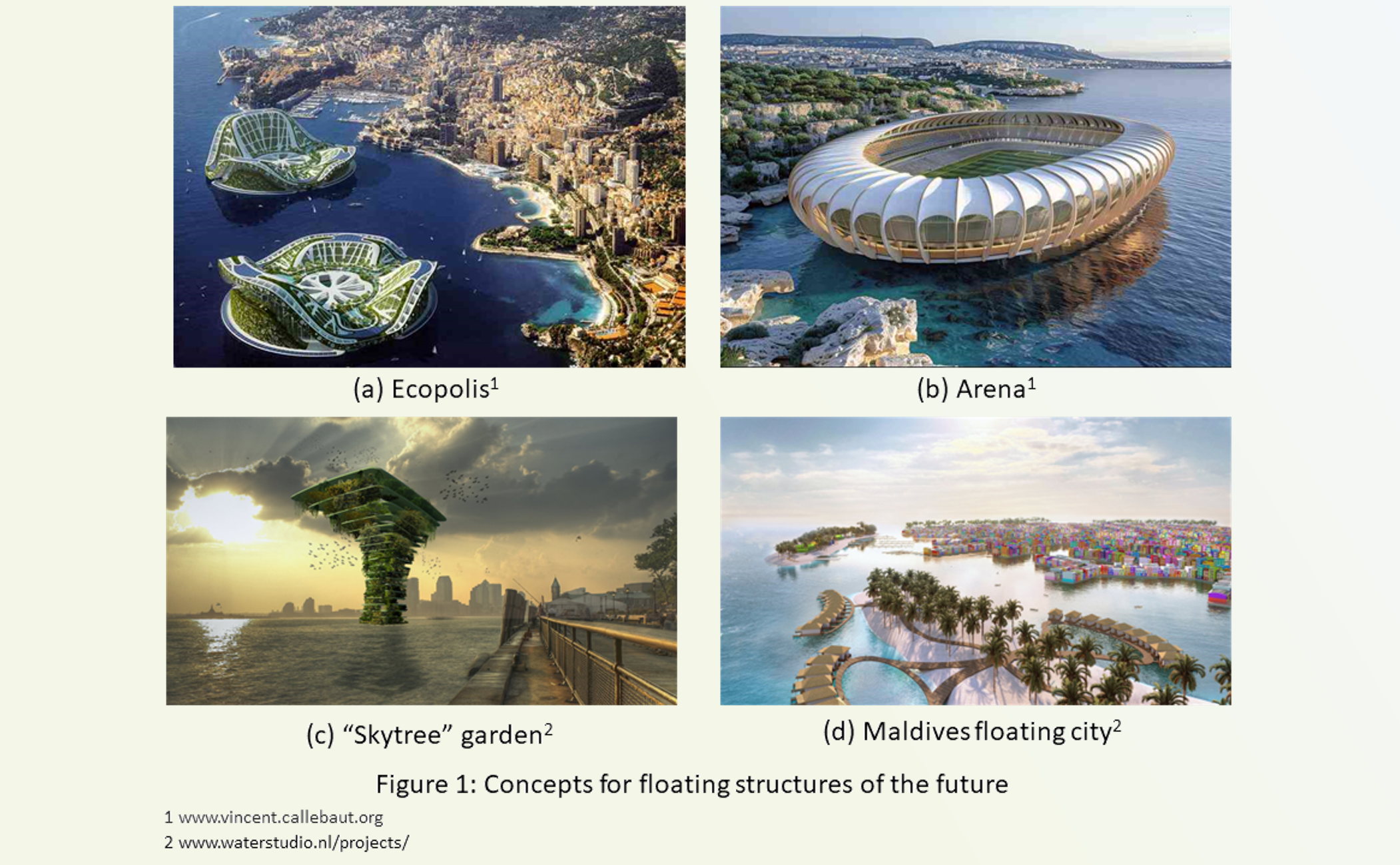
Engineering the skyline of tomorrow, at sea: Efficient analysis of large, nonlinear floating structures in the frequency-domain
Christof van Zijl March 21st, 2024, 16h00, Lecture Hall G
Recent estimates project that by 2050, about 70 percent of the world’s population will reside in urban environments. With many major cities situated along coastlines, large-scale floating structures offer a promising solution to the challenges of rapid urbanization coupled with the effects of climate change. The branch of engineering that deals with predicting the responses of flexible structures as they interact with the ocean is called hydroelasticity. The state-of-the-art methods in hydroelasticity involve simulating structural responses to fluid loading in the time-domain by exchanging information between the two domains at successive time-steps. However, this approach can be very time-consuming, which is unsuitable for design optimization and studying long-term structural responses under varying environmental conditions. As an alternative, very efficient calculations can be performed in the frequency-domain. However, the sheer size of large floating structures, along with the seemingly conflicting demand for lighter constructions, results in highly flexible marine structures that exhibit nonlinear behaviour. Since frequency-domain analysis is generally restricted to linear structures, an alternating frequency-time domain algorithm is investigated to study nonlinear structural behaviour. The method is demonstrated for a simple, nonlinear system, and the application to coupled fluid-structure problems, including some challenges, is discussed.
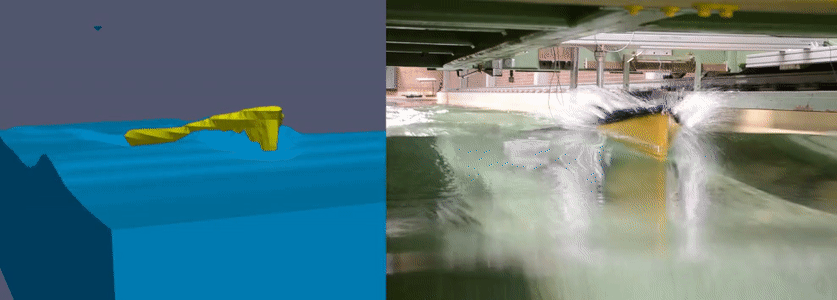
The nature of (extreme) wave structure interaction
Peter Wellens March 14th, 2024, 16h00, Lecture Hall M
The presence of marine structures in the interface between water and air can lead to challenging interaction during storms. Modelling these encounters between storms and structures is a challenge in itself. There is not one method that can represent all the necessary physical phenomena with sufficient accuracy to be able to evaluate such encounters. I have made it my ambition to use the combination of experimental modelling, numerical modelling and analytical modelling, with setups, models and implementations of our own design to push the boundaries of what we know about the nature of (extreme) wave structure interaction. By means of this presentation I will share some results of our endeavour, with applications in (high-speed) transport, energy production and food production, together with the background stories of how the results came about.
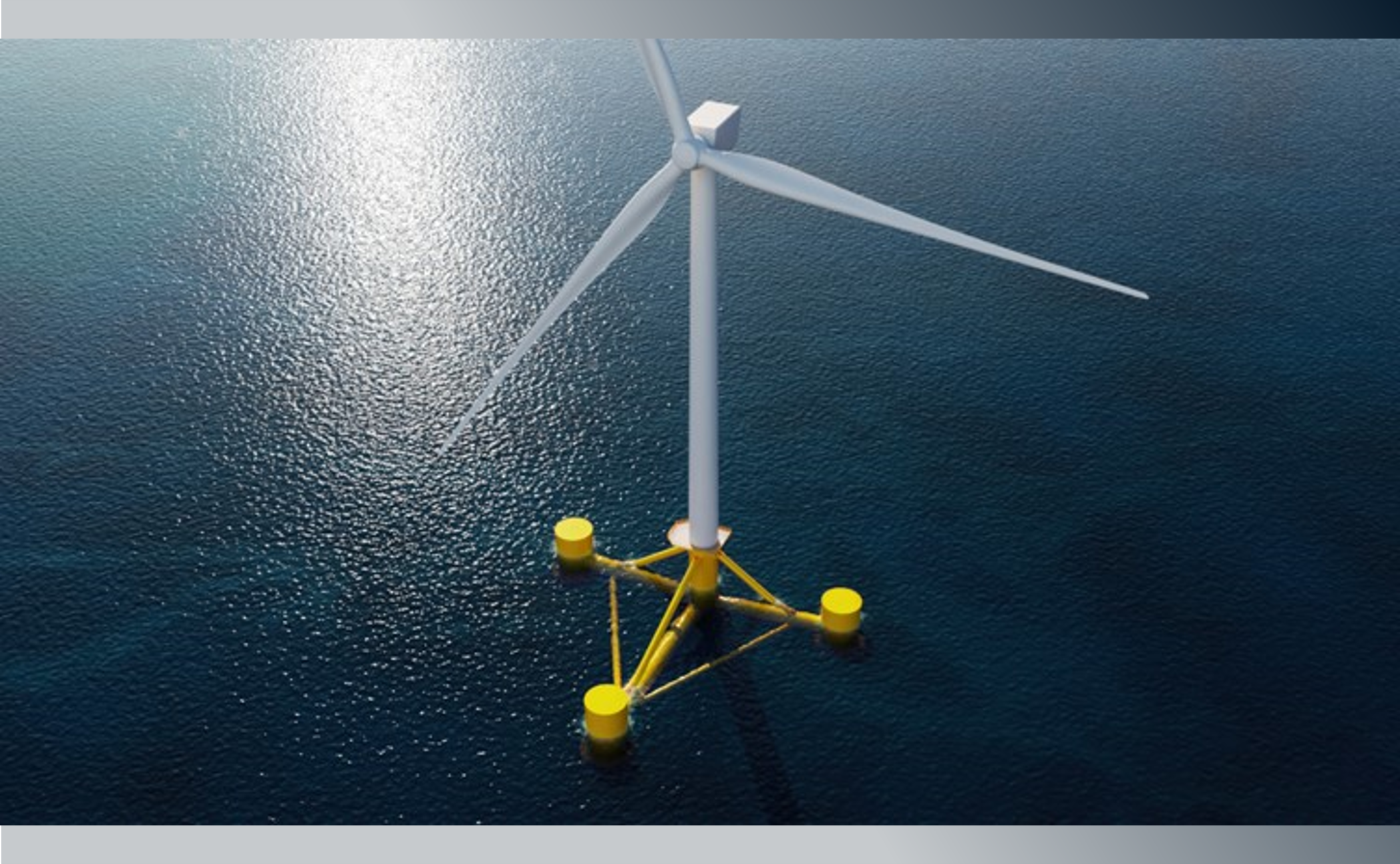
Multidisciplinary Design Analysis and Optimisation of Floating Offshore Wind Turbines
Kasia Patryniak March 7th, 2024, 16h00, Lecture Hall F
Floating Offshore Wind Turbines (FOWT) can harness the abundant wind resources in deep-water conditions. However, they are exposed to the harsher, unsheltered marine environment. Connected to the seabed through a mooring system, they experience large motions, with strong interdependence between inertial, wind, wave, and current-driven responses, necessitating accurate prediction of the system responses. The analysis of FOWT involves distinct, highly coupled disciplines and is applied to a complex heterogeneous system. My PhD research investigates this complex domain, focusing on the development of a comprehensive yet efficient coupled model of dynamics and optimisation framework for floating support structures. Leveraging the Multidisciplinary Design Analysis and Optimisation (MDAO) methodology, I aim to streamline the complex system design process and enhance the economic feasibility, reliability and safety of FOWT. In this presentation, I will explain what the Floating Wind Turbines are all about, how the MDAO methodology helps, and why the study of the two concepts is PhD-worthy.
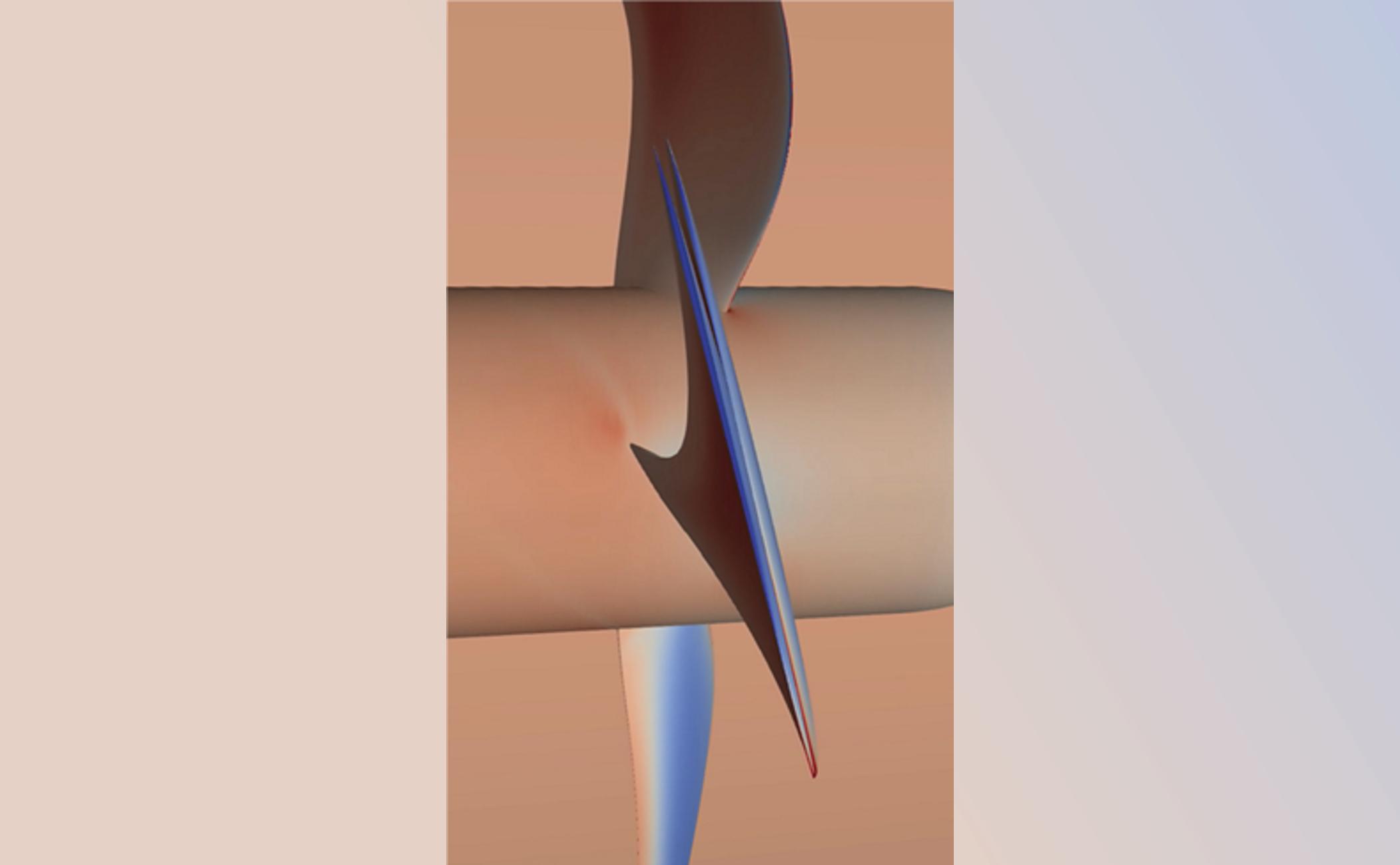
Optimisation of composite marine propellers
Laurens-Jan Lagendijk March 7th, 2024, 16h00, Lecture Hall F
This research aims to optimise flexible composite marine propellers to improve propulsive efficiency and reduce underwater radiated noise. Flexible propellers provide more design freedom where the shape of the propeller changes depending on the inflow conditions. A simulation workflow had been developed to enable the evaluation of many different propeller designs.

RODIN - Robust Onboard Distribution Networks
Evelien Scheffers February 22th, 2024, 16h00, Lecture Hall F
Currently there is no way to quickly quantify onboard distribution system robustness in the early stages of ship design. My PhD investigates the application of network theory in early-stage system design to increase the robustness of the integrated multilayer distribution system. This is done by studying the following: the state-of-the-art multilayer network approaches within the design of onboard systems, the current approach to robustness in onboard system design and qualitative robustness approaches within network theory and its applications. The overall goal of this study is to design a validated quantitative robustness metric that can be used to: 1) enable comparison between different multilayer onboard distribution network designs and 2) enable substantiated trade-offs between robustness and other design objectives in early-stage ship design. A key challenge in this research is to strike a balance between maritime applicability and graph theory-based assumptions. The transition to sustainable technologies and the increased levels of autonomy and integration of vital onboard systems, such as the electric distribution system and chilled water system, require a novel approach to the design of these systems to guarantee system availability. The validated quantitative robustness metric might be that novel approach.
TL;RD A presentation on my attempt to use network theory to estimate the robustness of distribution systems onboard ships.

Experimental investigation & in-cylinder process modeling of methanol-fueled marine ICEs
Konstantinos Kiouranakis February 22th, 2024, 16h00, Lecture Hall F
Shipping remains one of the hardest-to-electrify sectors in transport, while internal combustion engines (ICEs) remain the dominant power system of marine vessels. Replacing the fossil fuels that power these ICEs with sustainable fuels could retain the technology and accelerate the energy transition in shipping. Methanol has emerged as a very promising fuel to power marine ICEs. While complex engine strategies like diffusion are effective, they have limited applicability. Simpler-to-adopt premixed strategies, such as dual-fuel compression ignition and single-fuel spark ignition technologies, can be used with methanol but still face combustion challenges. Our research combines experimental investigation with thermodynamic in-cylinder process modelling to better understand methanol-powered marine engines, their efficiency, environmental impact, and optimization potential. Further, the intended developed models in this research can then be applied in further applications such as voyage simulation and digital twins.
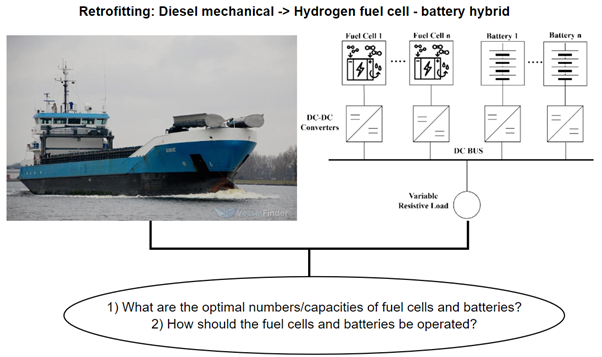
Energy system design and operation optimization for ships with hydrogen fuel cells and batteries
Foivos Mylonopoulos February 15th, 2024, 16h00, Lecture Hall F
Hydrogen fuel cells and batteries are among the most promising alternatives to reduce onboard shipping emissions and meet the International Maritime Organization goals. Despite their higher cost and complexity compared to traditional configurations with diesel mechanical propulsion, hydrogen-hybrid systems offer zero onboard emissions, reduced noise, increased flexibility, energy efficiency, and reliability in the case of failures. The current state of research in marine energy systems has concentrated on conventional diesel systems, while limited literature is available on system design, sizing and operation of alternative energy sources, which have attracted increasing interest recently due to the energy transition. To accelerate the development of fuel cells and batteries and increase their utilization in the maritime industry, more research is required on the design and operation of these components to improve the overall system efficiency and durability. In this research, the focus is on the power distribution, and the selection of the capacities and numbers of Low Temperature PEM fuel cells and lithium-ion batteries for the powerplants of ships. Different algorithms will be used for the optimal sizing and operation of the hybrid configurations in order to improve weight and volume utilization, minimize fuel consumption, reduce degradation and total costs, considering the lifetime of the components.

Model-based design of mechanically intelligent structures
Aaron Chen February 15th, 2024, 16h00, Lecture Hall F
Soft grippers present advantages in adaptability and flexibility for manipulating objects with various shapes and fragility levels. However, their utility in complex scenarios is constrained by limitations in loading capacity and deformability. The advancement in smart material structures introduces innovative avenues for addressing these challenges. Moreover, conventional design methodologies, which heavily depend on experimental procedures, present obstacles to rapid and efficient design iterations. Consequently, employing simulations emerges as an effective approach to support the design of soft smart grippers. In this study, the model-based design concept was employed to investigate a novel actuation approach grounded in smart material structures, aiming to enable soft grippers to achieve tailored functionalities. The simulation results demonstrate that introducing smart granular jamming effect as an actuation mechanism can yield significant deformations while maintaining high stiffness levels. Conversely, utilizing smart materials as actuation enables substantial deformations with reduced reliance on external power components. Furthermore, the combined effort of various smart materials enables varied deformation. In summary, by integrating different modeling approaches, material models, and contact models, it is feasible to efficiently design a soft gripper tailored to specific requirements, thereby providing guidance and support for engineering design.
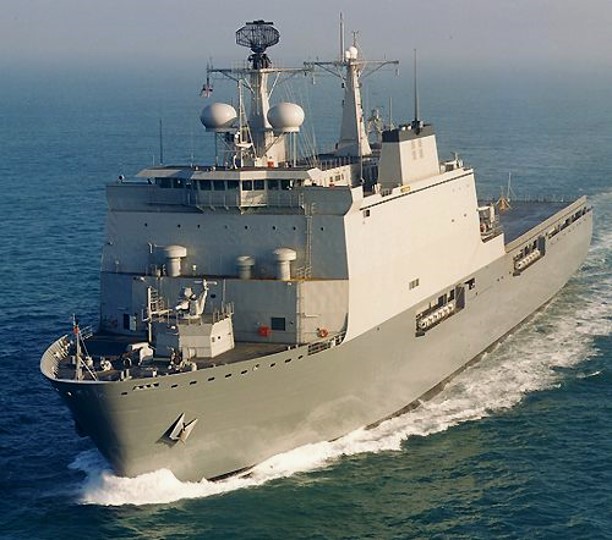
From "Rotterdam" to "Delft"
Hans Hopman February 8th, 2024, 16h00, Lecture Hall F
During the 25 years that I was involved in the development of many new ships for the Dutch Navy, I have gained a lot of experience in how ship designs are created in practice. Since naval ships are funded entirely with taxpayers' money, attention has been paid to the design and control of the design process much earlier than with commercial ships. In this presentation I show how these experiences have given direction to the further development and application in both his teaching and research during the 17 years that I have been able to fulfill the position of Professor of Ship Design there.

Non-Contact Acoustic Emission Monitoring of Corrosion-Fatigue Damage in Mooring Chain Links
Filippo Riccioli February 1st, 2024, 16h00, Lecture Hall E
Mooring chains are key parts of floating energy production units, such as floating wind turbines, photovoltaic islands, and floating production-storage-offloading units (FPSOs). Corrosion-fatigue is regarded as one of the main degradation mechanisms affecting the structural integrity of mooring chains. Detailed inspection of these structures can be difficult due to their challenging access and presence of marine growth. This research deals with the development of an underwater Acoustic Emission (AE) monitoring methodology to detect, localise, and characterise damage in mooring chains without cleaning the surface from marine growth. Our recent large-scale corrosion-fatigue experiments, performed on a mooring chain retrieved after 20 years of service offshore, are highlighted in this presentation.
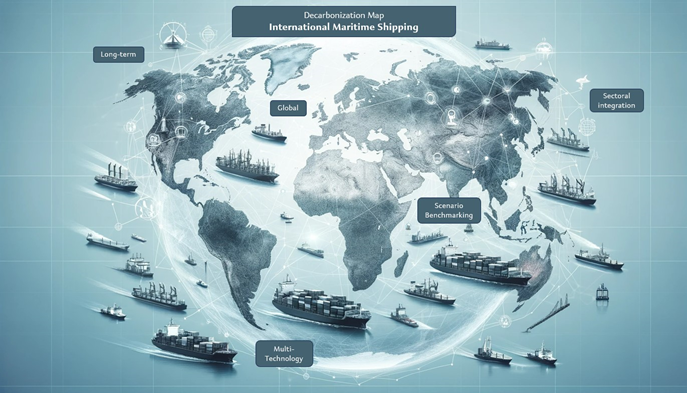
A techno-economical investigation of Pathways to Sustainable Shipping
Hesam Naghash January 18th, 2024, 16h00, Lecture Hall E
As climate change continues to pose a significant threat to our planet, international maritime shipping plays a crucial role in mitigation efforts. While other sectors have started investing in decarbonization, shipping, being inextricable from our economy, is likely to see an increased share of emissions. To counter this, the International Maritime Organization (IMO) has heightened its ambitions, setting a target for full decarbonization by 2050. It is widely acknowledged that achieving this goal will require the large-scale utilization of alternative, carbon-free fuels. However, no alternative fuel is yet ready to take over, due to high costs and a lack of infrastructure. There is a need for models to investigate the feasibility of alternatives and to chart the pathways ahead. To date, most models used are sectoral, investigating the shipping sector stand-alone. In my research, I plan to integrate the shipping sector with other parts of the economy to observe the holistic big picture, thereby gaining more insights into possible pathways toward a zero-emission future. The plan is to investigate the main aspects—demand, supply, emission, and policy—of international maritime shipping and to view them in a global, long-term, and integrated context.
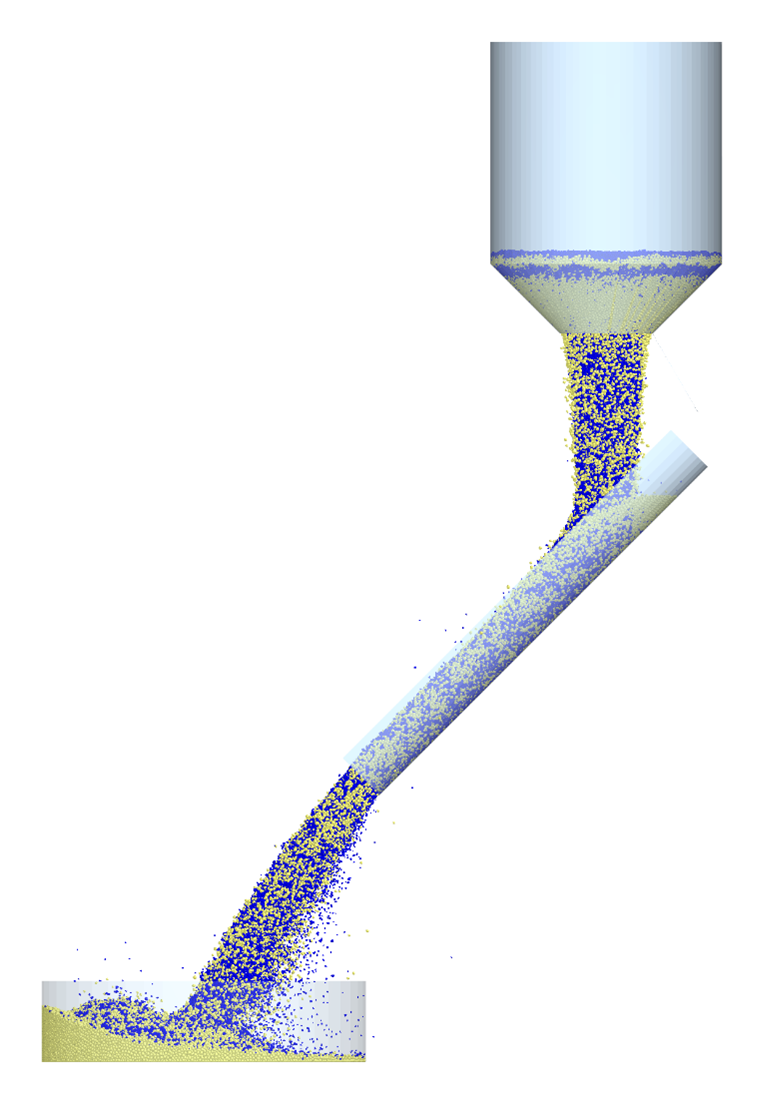
Discrete element modelling of segregation in blast furnace charging system
Ahmed Hadi January 18th, 2024, 16h00, Lecture Hall E
Segregation of granular materials is crucial in various industries, including food processing, pharmaceuticals, and mining. In the blast furnace, segregation of charging materials can disrupt burden homogeneity, hindering efficient gas-burden contact and reducing productivity. Therefore, investigating the segregation in blast furnace segregation is of great importance. Given the harsh environment in the blast furnace, physical inspection for segregation is nearly impossible. Hence, the Discrete Element Method (DEM) serves as an alternative, providing particle-level insights into granular segregation that are challenging to obtain through experiments. To ensure an accurate representation of material behaviour, the DEM model should be systematically calibrated against experimental results. This project aims to establish a calibrated numerical model to capture realistic material and segregation behaviour during charging and burden formation. The developed DEM model will be utilized to identify and address segregation in the blast furnace by testing different reduction or control strategies.

Marine Minerals
Rudy Helmons January 11th, 2024, 16h00, Lecture Hall C
The ocean floor contains vast mineral resources that are necessary in renewable energy technologies. These minerals are expected to be in high demand due to the de-carbonization of the global economy and the transition to a net-zero economy. While the ‘blue minerals’ may hold the key to a greener future, mining the deep seas raises many questions and dilemmas. Can these minerals be mined without causing serious harm to the unique ecology of the deep oceans? Who will be allowed to exploit these minerals, and on what conditions? What rules and incentives are needed to attract responsible investors that can pay for the development of the necessary technology? During this session, we will discuss the concept of deep-seabed mining and the many diverse challenges that this (nascent) industry faces. Can we organize mining in such a way that major impacts can be mitigated and minimized upfront? An overview will be provided of the research conducted at TUD. Next to that, we will discuss how engineering sciences play an essential role within this complex topic and how we navigate our research in a topic that is considered controversial by many. I will share my insights and experiences on how to operate in such a multi-disciplinary and highly politicized theme.

Coordinated Control for Hydrogen-based DC Shipboard Power Systems
Timon Kopka December 21th, 2023, 16h00, Lecture Hall E
We can currently observe an increasing complexity in the design of the electric system onboard ships. On the generation-side, a broader variety of technologies emerges, including energy storage systems and zero-emission power supplies. The trend goes towards an integrated power system with all loads including the electrified propulsion plugged into the electric system. However, different enabling technologies, such as DC distribution and power electronics interfaces give us a high degree of controllability over the power flows. A big challenge in this context is the question how we can balance load and supply while utilizing all components efficiently in both dynamic and steady-state conditions. During the first phase of my research, I focused on hydrogen-based zero-emission ships equipped with fuel cells and batteries, which have very different characteristics and accordingly need to be operated differently to achieve a load balance. An additional focus of my research lies on the control and communication architecture for the power system control. The aim for my proposed strategy is the ability to accommodate the integration of multiple different power system components in a modular fashion without the need for an extensive high-bandwidth communication or redesign after reconfiguration.
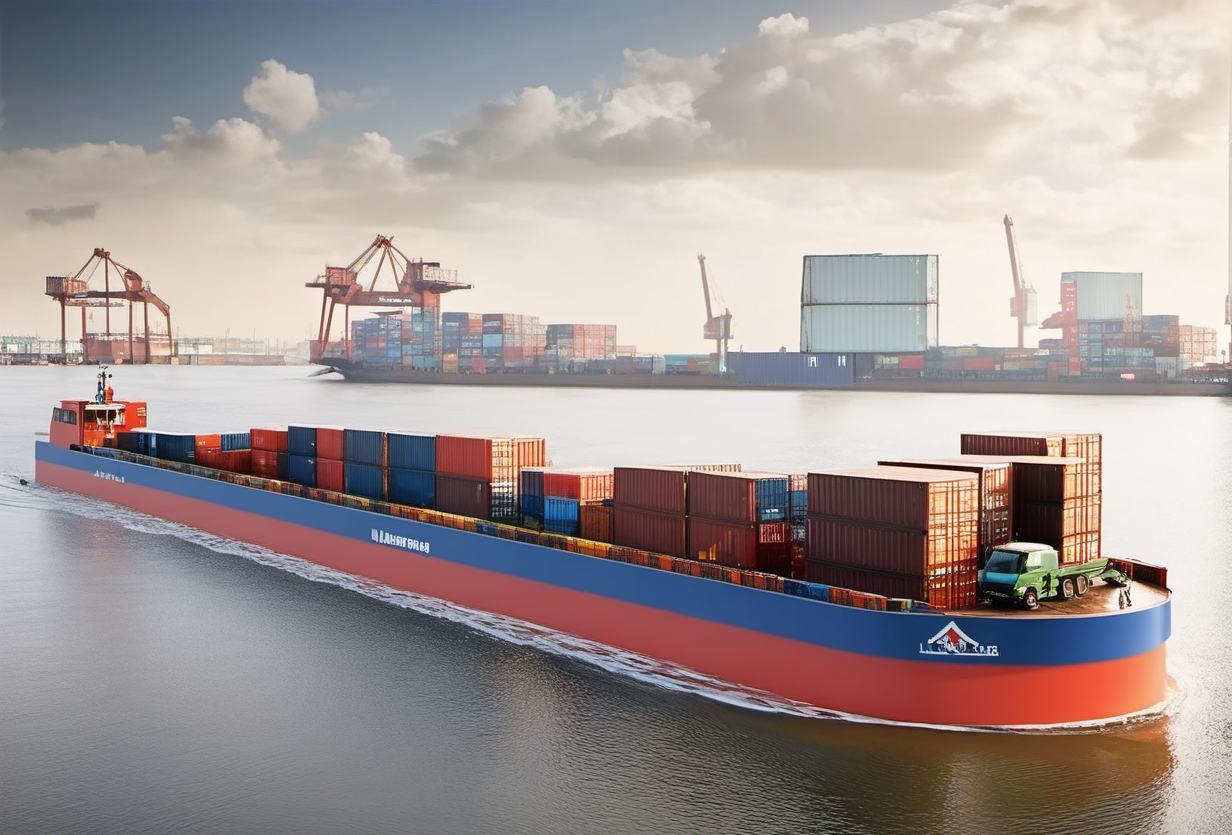
A Multiple Sensor Fault Diagnosis Scheme for Autonomous Surface Vessels
Abhishek Dhyani December 21th, 2023, 16h00, Lecture Hall E
Autonomous surface vessels (ASVs) have started to operate in many safety-critical scenarios where rich sensor information is required for situational awareness, environmental perception, motion planning, collision avoidance and navigational control. A timely diagnosis of faulty onboard sensors is therefore essential for ensuring maritime safety and reliability. In this presentation, I will present a model-based fault diagnosis scheme for ASVs affected by multiple sensor faults. Various monitoring modules comprising nonlinear observers are employed for the detection of faults occurring in the vessel’s navigational sensors. Further, multiple fault isolation is performed based on a combinatorial decision logic, achieved by grouping the available sensors into multiple sensor sets. I will also showcase some simulation results performed for a vessel trajectory tracking problem.
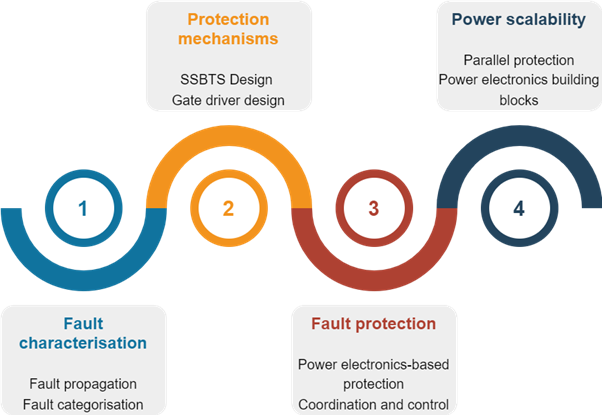
Protection of DC systems: Power Electronics in the Maritime Energy transition
Alejandro Latorre Correa December 7th, 2023, 16h00, Lecture Hall E
Given that DC technology is in development, several aspects of shipboard systems have not yet been sufficiently devised to ensure the protection and efficiency demanded. Several issues in DC systems arise from the lack of complete relevant standardisation from different regulation bodies. The placement of power electronics in DC systems creates opportunities for switchboard design, and this presentation discusses the distributed approach. Likewise, protection architectures for shipboard DC systems have challenges, where diverse applications require different power levels, architectures, and protection strategies. Inherited from the outdated standardisation, the fault analysis seems currently insufficient for developing DC shipboard technologies. This research proposes a use case-based categorisation of short circuits in primary shipboard DC systems to counterbalance identified shortcomings. A reference scenario is created using a simulation model of the primary system in a 5 MW superyacht to provide a short circuit inventory. This work addresses a critical gap in shipboard DC systems, providing a foundation for improved protection strategies and regulations, ultimately contributing to the advancement of safe and fault-tolerant shipboard DC systems.
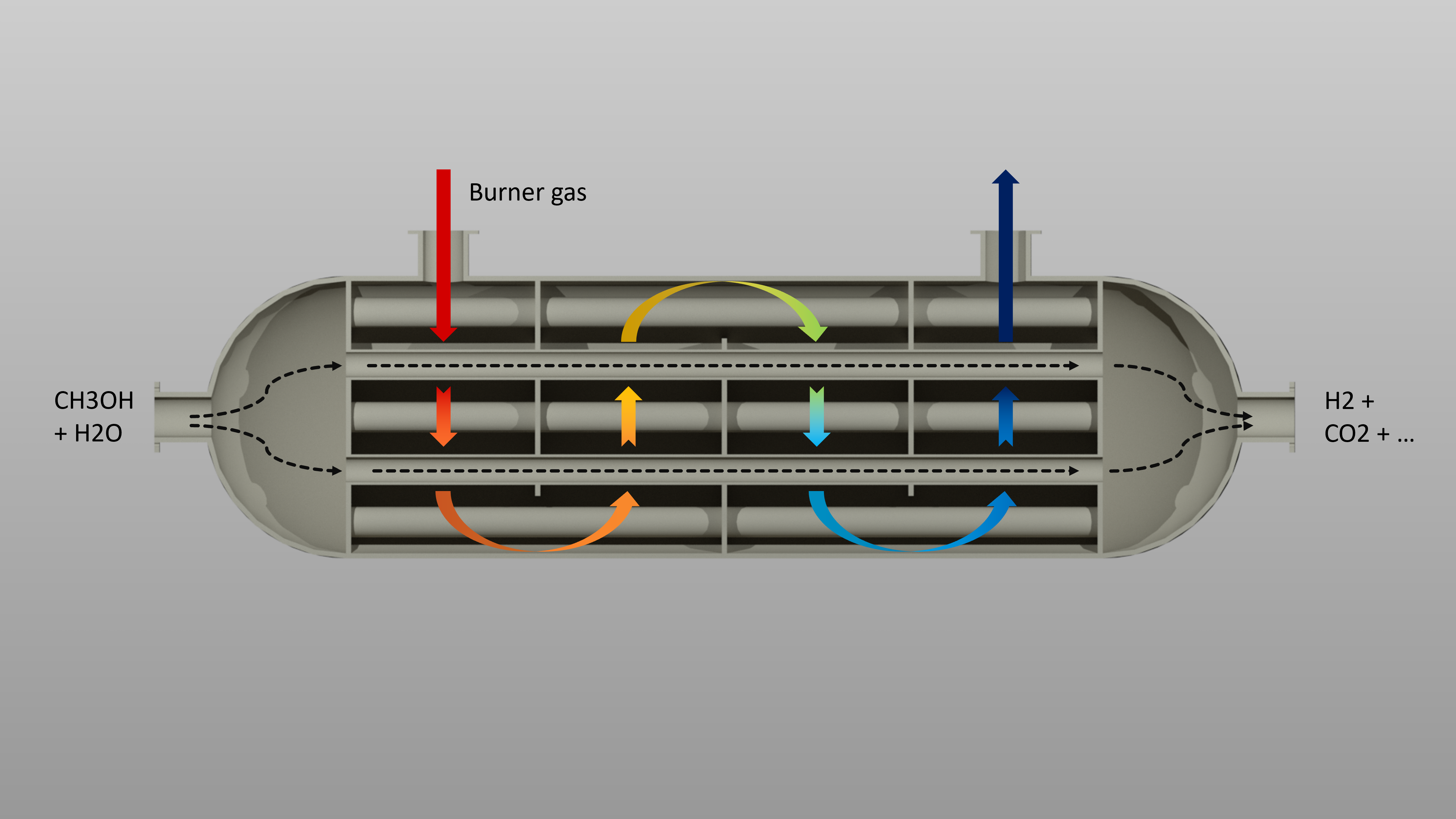
Methanol reforming for maritime fuel cell systems
Bojan Grenko December 7th, 2023, 16h00, Lecture Hall E
Hydrogen carriers in maritime are regarded as a suitable, and sometimes necessary path for avoiding direct shipboard storage of hydrogen required by the fuel cell systems. However, converting hydrogen carriers into suitable fuel cell feed gives rise to process related challenges, often specific to each hydrogen carrier. In my research, the focused carrier is methanol. The extensive petrochemical experience in methanol reforming is insufficient for maritime applications. Dynamic power demand and long operating hours of ships degrade the reformer in a unique, unknown way. As reformer degrades, hydrogen production varies which is scarcely tolerated by the fuel cell. Currently there are no predictions of variations in hydrogen production over total operating hours. Consequently, there are no guidelines for sizing and operation of such system. Insight into the process operation is obviously crucial for a self-sufficient environment of a maritime vessel. In my research I aim to uncover the causes and effects of variations in operation of a maritime methanol reformer. The first part of the research is creating a model to simulate long dynamic operation of a maritime methanol reformer. Second, the model shall be validated through experimental campaign. Finally, the reformer model will be expanded with a fuel cell addition, to examine the operation of the entire power production system. The comprehensive system model will be used to estimate the size, power demand, and efficiency of power production from methanol as a hydrogen carrier.
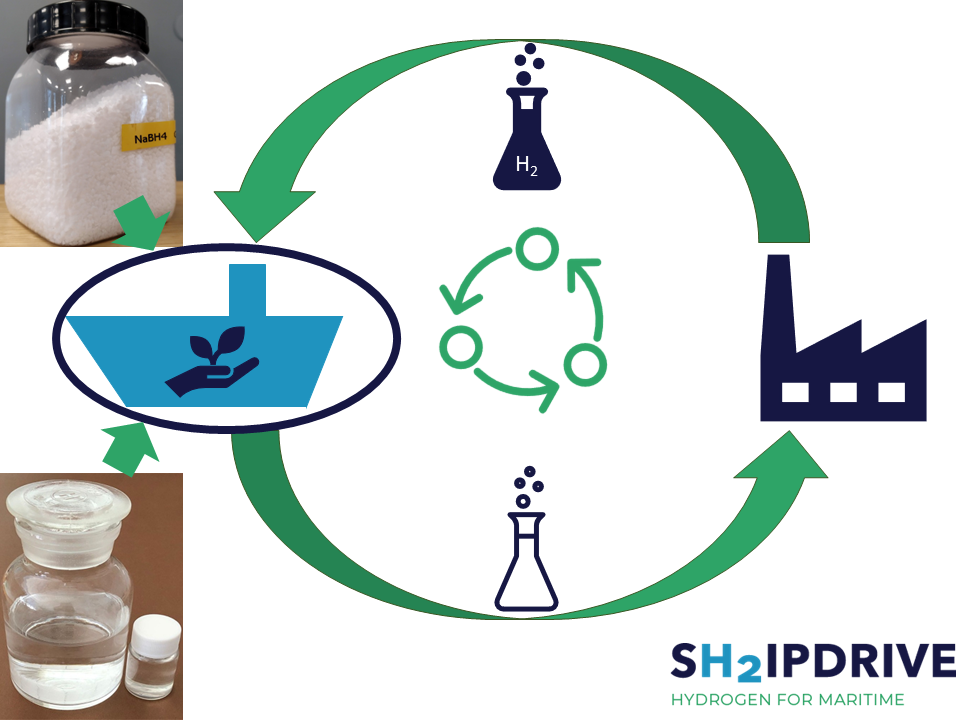
Hydrogen Carriers – A safe and sustainable way of storing hydrogen as fuel for ships
Erin van Rheenen November 23th, 2023, 16h00, Lecture Hall L
The International Maritime Organization (IMO) has set a goal for ships to reach net-zero GHG emissions by 2050. One way to achieve this is to use hydrogen as fuel. Storing hydrogen in its pure form results in low volumetric energy density and risks of explosions. This can be mitigated by using hydrogen carriers, substances that can store and release hydrogen on demand. There is a wide variety of hydrogen carriers, but not all of them are suitable for ships. Phase 1 of my research focused on identifying hydrogen carriers with potential as alternative ship fuels. I evaluated these carriers for safety and energy density, the two most important factors, however, this appeared to be more complex than initially thought. In this talk, I will give you an overview of the hydrogen carriers with potential and a short safety and energy density analysis for these hydrogen carriers.
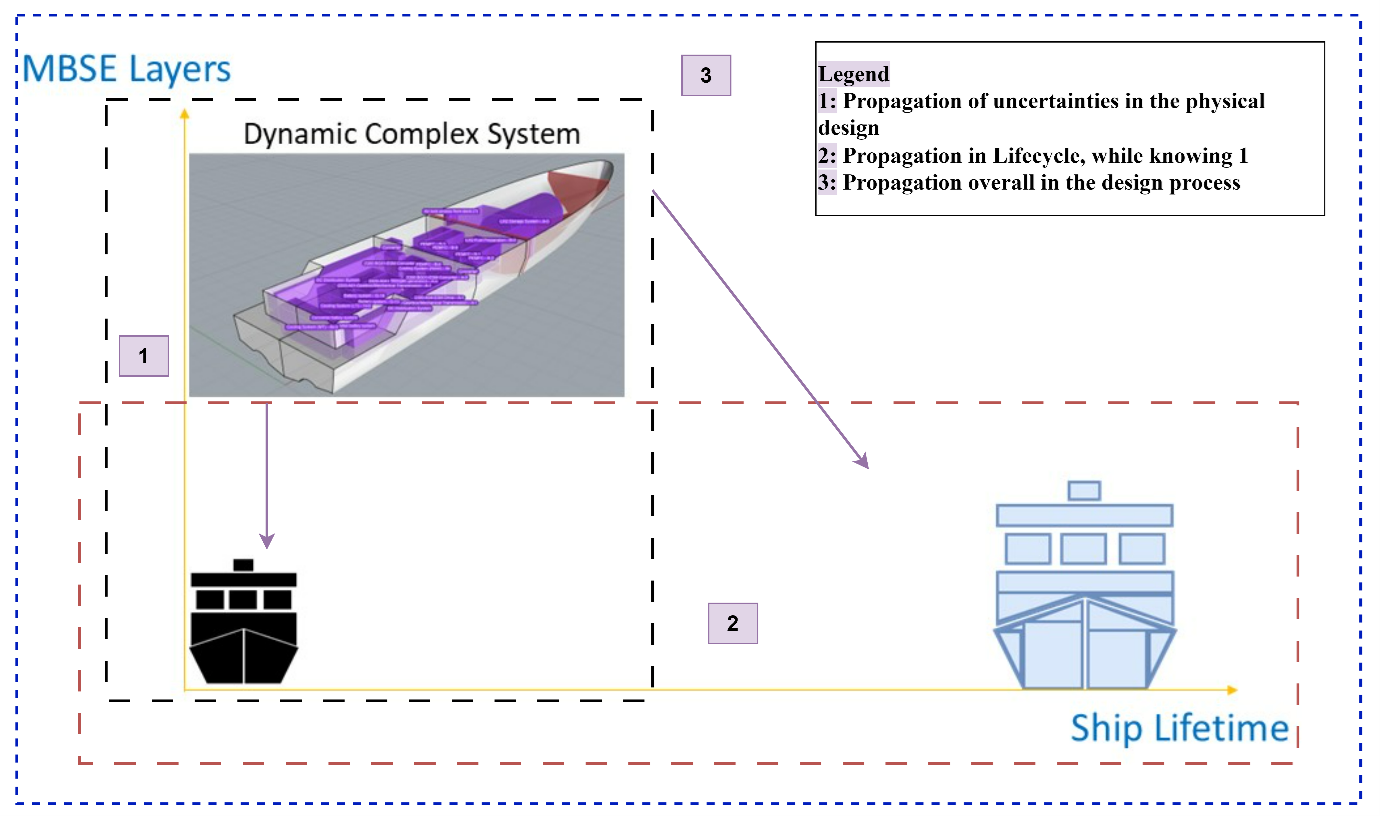
Characterizing the uncertainties of alternatively fuelled power propulsion and energy (PPE) systems and propagation of them as risks in ship design
Apostolos Souflis-Rigas November 23th, 2023, 16h00, Lecture Hall L
The adoption of alternative fuels is crucial to mitigate harmful emissions of the maritime industry and to align with IMO’s revised strategy to achieve net-zero greenhouse gas emissions by international shipping close to 2050. Methanol is one of the fuels being actively researched to support this due to its strong decarbonising potential. However, technology of potential methanol energy converters is still under development, meaning that their sizing and performance characteristics will likely change throughout the lifecycle of vessels that are designed today. As a result, vessels constructed with methanol as a fuel will need to account to future changes early on in the design process to maintain good operational performance throughout their lifecycle. The advancement of methanol power and energy machinery equipment in sizing and performance parameters influences the ease of their integration within the general arrangement of the vessel. A design method is thus needed that incorporates: (1) lifecycle uncertainty into vessel design decision making, and (2) the new uncertain methanol machinery equipment into a physical vessel design. These two topics have traditionally been treated separately in the state-of-the-art literature, with lifecycle analyses typically ignoring the risks of physical integration in proposed lifecycle retrofits, and with engine room layout research typically being done in a time-static manner. This research thus aims to bridge these two fields by proposing a method that combines the use of (1) Markov decision processes to assess uncertain future methanol developments during the vessel lifecycle and (2) a generative engine room layout algorithm to assess the risks associated with actually fitting the machinery system into an existing ship layout. The generated lifecycle options are then compared based on economic and environmental indicators to determine propulsion configuration trends within the vessel lifecycle.
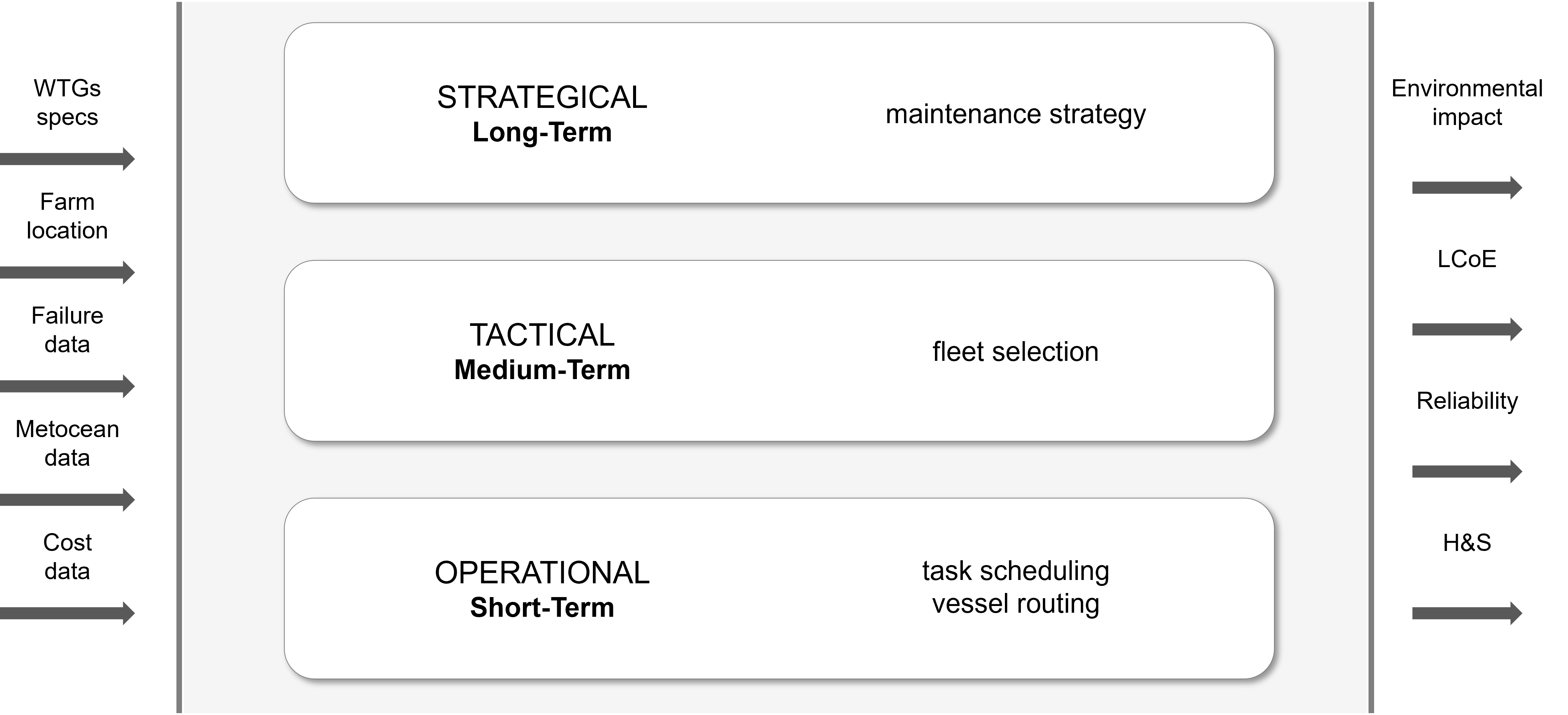
Optimization of the O&M Decision-Making for Offshore Wind Farms
Marco Borsotti November 16th, 2023, 16h00, Lecture Hall E
Offshore Wind Farms are expected to play a crucial role in mitigating climate change and promoting sustainable development, nevertheless, Operation and Maintenance (O&M) costs can account for approximately 25-30% of the total cost. The challenges related to O&M can be categorized into three main echelons, depending on the time-horizon of reference. The long-term horizon is typically focused on the overall maintenance strategy for the wind farm. The medium-term horizon is focused on the selection of the fleet and the management of spare parts. The short-term time horizon is focused on the scheduling of individual maintenance tasks on a daily or weekly basis and the routing of the vessels. A critical literature review on the topic exposed the lack of comprehensive models and methods that encompass all time horizons holistically and showed that O&M strategies often prioritize cost-effectiveness while overlooking environmental considerations. This project aims to develop a holistic framework for the optimization of O&M decision-making for offshore wind, that integrates the decisions and information belonging to the three time horizons while also considering environmental and sustainability aspects. A baseline O&M simulation model has been developed to simulate the prediction and execution of maintenance activities and track the associated costs throughout the lifetime of an offshore wind farm, this model can currently be used to assess the effectiveness of different O&M strategies and its results will be used as reference for further optimization. Furthermore, a short-term optimization model based on prognostic-driven maintenance scheduling is under development. By implementing more efficient and dynamic O&M models, operators can reduce the frequency of maintenance activities, minimize downtime, and increase the availability and performance of the wind farm.
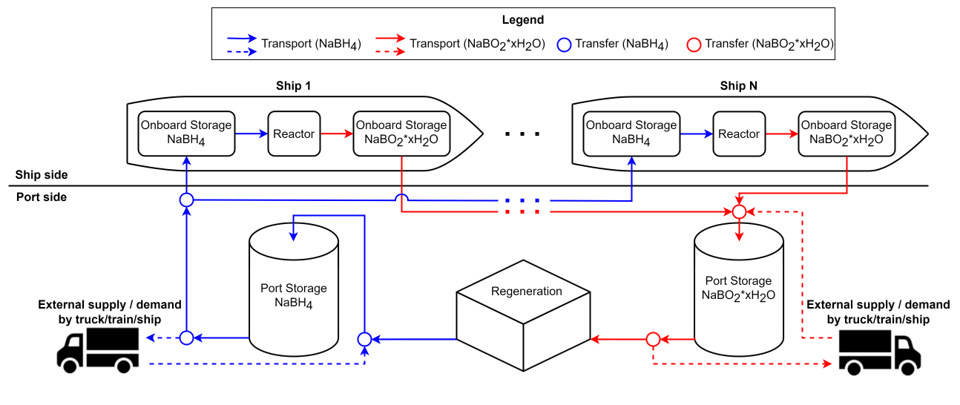
Towards Hydrogen-Fuelled Maritime Vessels using Solid Hydrogen Carriers
Marcel van Benten November 16nd, 2023, 16h00, Lecture Hall E
Solid hydrogen carriers, such as sodium borohydride or potassium borohydride, are seen as promising options to enable the use of hydrogen as a fuel for maritime vessels, because of their favourable gravimetric and volumetric energy density compared to compressed or liquefied hydrogen. When using solid hydrogen carriers as fuel for maritime vessels, a ’spent fuel’ (sodium/potassium metaborate) forms, which has to be stored on the vessel for the remainder of the voyage. Furthermore, the spent fuel has to be regenerated (e.g. using ball-milling) upon arrival at the destination port in order to achieve circularity. To design the required storage and handling equipment to realize this circular bunkering process, the mechanical characteristics of both the fuel and the spent fuel, e.g. particle size distribution, internal friction, cohesion, wall-friction, and flowability are required. Consequently, during the first part of my research, I aim to identify and experimentally determine the relevant mechanical characteristics of sodium borohydride (fuel) and sodium metaborate (spent fuel) in the context of bunkering maritime vessels. Using the found characteristics, my objective is to use the Discrete Element Method (DEM) to simulate the behaviour of the fuel and spent fuel. Finally, if the simulations are verified and validated, I will use this knowledge to propose guidelines for the design for storage and handling equipment, both on-board of the vessel and in the port.
Learning on the job (nobody starts their career with experience)
Harleigh Seyffert November 9th, 2023, 16h00, Lecture Hall B
It would be nice if we all knew what we were doing, what we want to do in the future, and never made mistakes while trying to get to that future. But that doesn’t happen in real life. We gain experience by trying new things, figure out what we like by discovering what we don’t like, sometimes get rejected from what we think we want to do, and will (unfortunately, but necessarily) make some mistakes along the way. That’s at least been my experience. But on the other hand, I thoroughly enjoy what I do, am optimistic about the future, and in general do not feel stressed by this work. How can these two states (sometimes painfully gaining experience by learning on the job, while still enjoying the job) exist together? That’s what I’d like to discuss during the social talk.
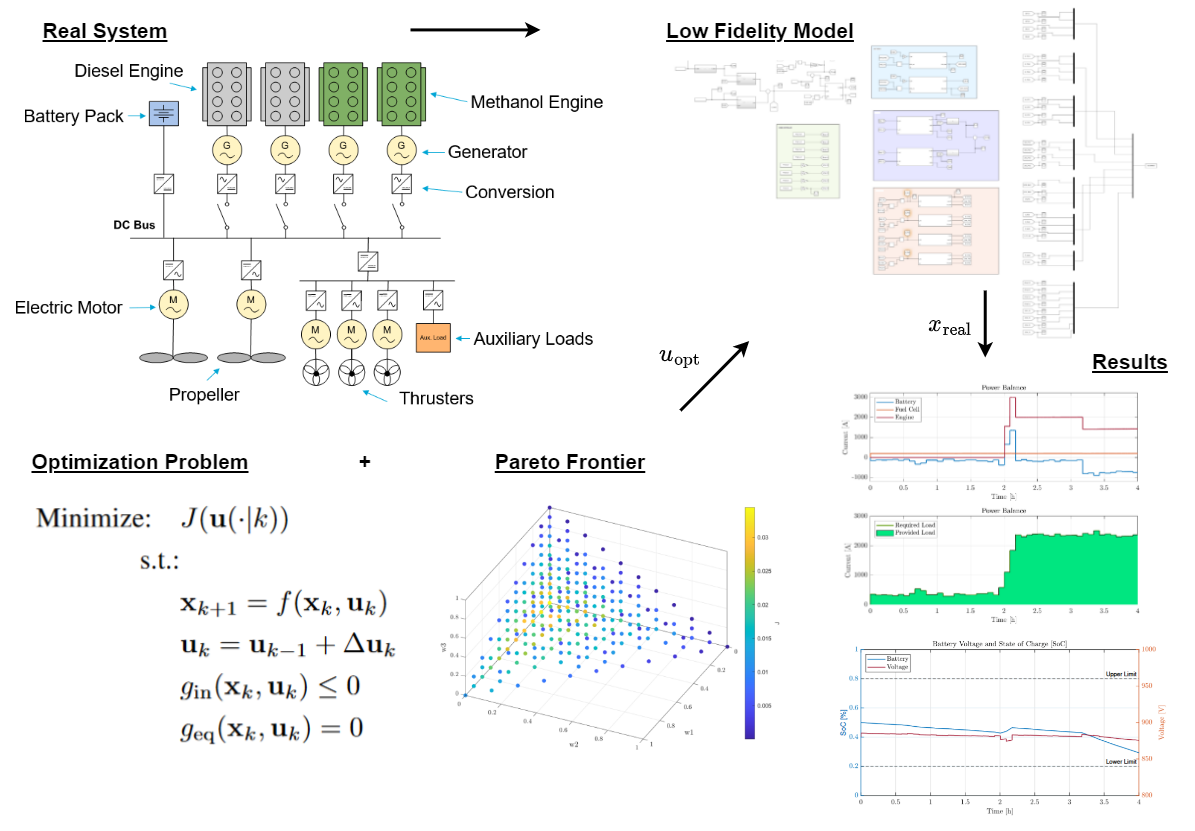
Intelligent energy management for multi-component vessel energy systems
Charlotte Loeffler October 19th, 2023, 16h00, Lecture Hall I
Recent trends towards electrification introduced a variety of new components into vessel energy systems. Since this adds additional degrees of flexibility to the energy management of the load sharing between different power sources, determining the problem optimal operating point of each subsystem increased in complexity. Furthermore, reduction of fuel consumption is not the only objective of interest in the control anymore. Ideally, the energy management has to take all relevant objectives, such as fuel consumption, emission production, or component health, into account for determining an optimal power split. Since commonly used rule-based strategies provide suboptimal solutions for multi-objective problems, using optimization-based control strategies can become necessary to achieve optimal energy system operation. In this talk, I’ll give an introduction into the problem, my current research on multi-objective energy management using an instantaneous optimization approach and its limitations.
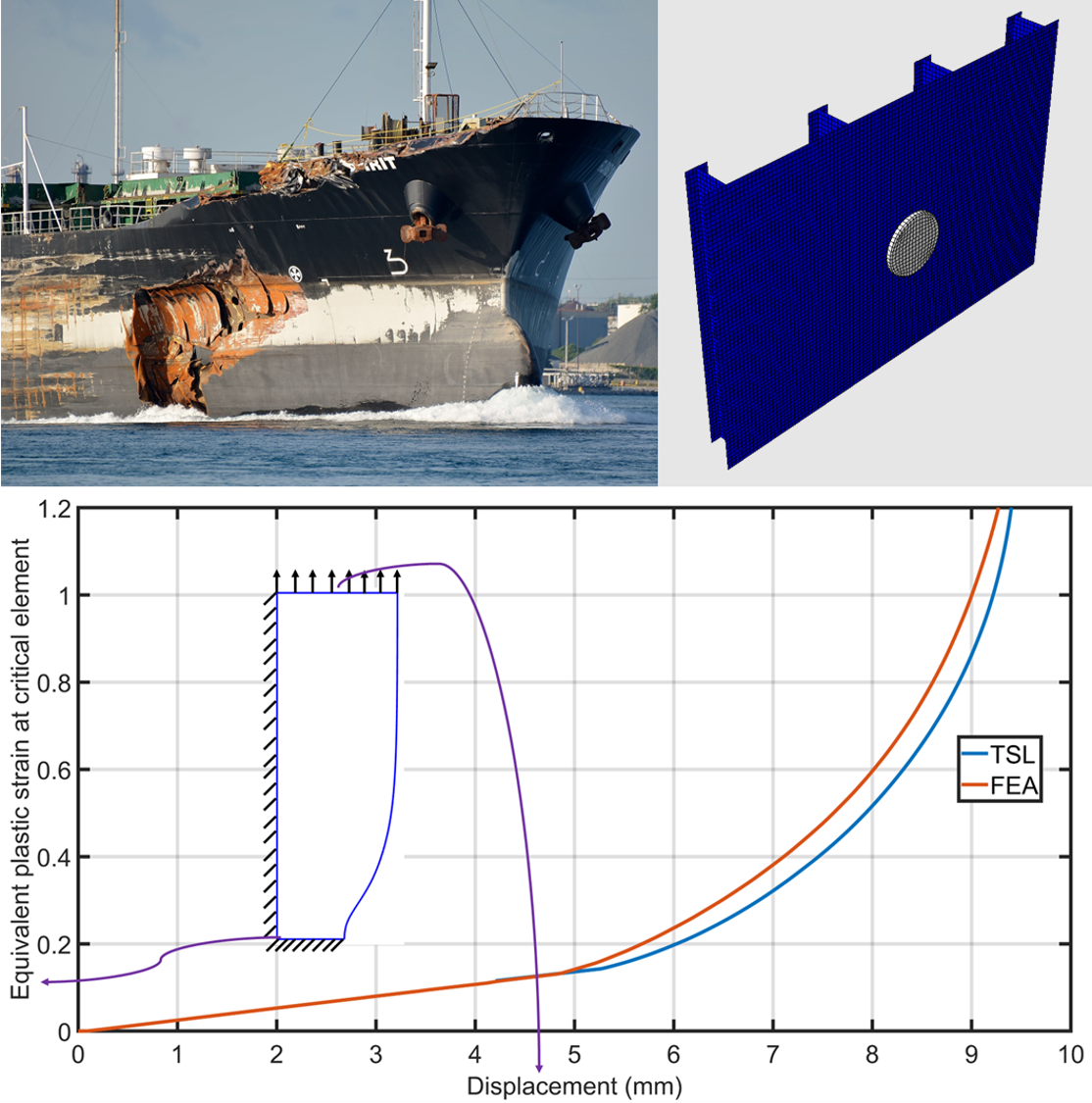
Multi-Scale Failure Modeling of Metallic Thin-Walled Structures
Mohammed Adly October 19th, 2023, 16h00, Lecture Hall I
What happens to a ship’s hull in case of a collision, grounding or impact? Is it possible to accurately simulate what happens to a ship in such a scenario using finite element with the current computational capabilities? Mult-Scale Failure Modelling could help make such simulations more practically feasible in the short term. The research question will first be introduced in a real world scenario and the gap between the current computational simulation capabilities and the scale required for high fidelity results will be illustrated. The current work within my project to bridge this considerable gap will then be presented in a more simplified case. Focus will be given on how to analytically model the necking phenomena (which is generally considered to be the principle cause of mesh sensitivity in plasticity simulations) in the plane strain case. The roadmap towards extending the current work towards more generalised cases will then be discussed in light of some open questions to the audience.
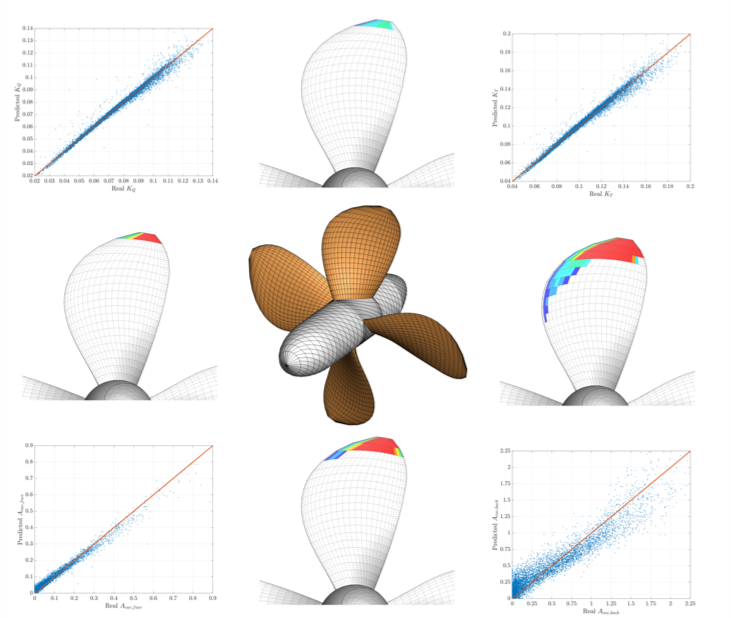
Embracing Uncertainty in Optimization: Machine Learning-Based Approaches for Marine Propeller Optimal Design
Andrea Coraddu October 12th, 2023, 16h00, Lecture Hall I
Marine propeller design is a cornerstone of naval architecture and marine engineering, serving as a classic optimization problem that has captivated the attention of scholars, engineers, and practitioners for generations. The challenge lies in developing efficient, reliable, and cost-effective propellers that excel in various operating conditions while adhering to strict environmental regulations and addressing noise and vibration concerns. As a critical component in the propulsion systems of ships, submarines, and other marine vessels, the marine propeller's design directly impacts vessel performance, fuel consumption, and emissions. Marine propellers often operate under uncertain conditions, including inflow, rate of revolutions, and manufacturing tolerances. On the one hand, a deterministic design approach that does not consider these stochastic inputs can lead to excessive sensitivity to slight variations in operational conditions, resulting in a sub-optimal geometry for real-world functioning scenarios. On the other hand, the computational effort required to quantify the design's uncertainties may be prohibitive even when mid-fidelity solvers, like Boundary Element Methods (BEM), are employed in Simulation-Based Design Optimization. As in the case of deterministic design optimizations driven by mid-fidelity codes, Machine Learning methodologies represent a computational booster of the procedure. By realizing computationally cheap yet accurate surrogate models of the key performance indicators of the design, they allow for the hundreds of thousands of calculations needed by sampling methods to evaluate the uncertainty of the design and drive the process towards configurations less sensitive to input variations, making the non-deterministic design optimization a feasible alternative to conventional deterministic design-by-optimization methodologies. In this talk, deterministic and non-deterministic designs are carried out in the case of a conventional propeller, considering uncertainties of the nominal functioning conditions. BEMs computations are used to train accurate Machine Learning-based surrogate models. Thanks to their cost-effectiveness in the forward phase, they enable the assessment of the uncertainties necessary for a non-deterministic design optimization framework. To demonstrate the efficacy of the proposed methodology, the optimal geometries attained through the utilization of surrogates are re-tested utilizing medium-fidelity BEM solvers to validate the superior performance of the non-deterministic design approach.

Probabilistic analysis on how draft and freeboard effects green water
Anna Boon October 5th, 2023, 16h00, Lecture Hall E
A wave impacting the deck and superstructure of a ship is called green water. Green water is rare and complex and can be a danger to the ship and those aboard. During the design process, the risks that these events pose have to be mitigated, preferably by minimizing the probability of a large impact occurring. As green water events are rare and complex it is difficult to get a statistically representative data set, thus previous work has mostly compared design variations through a limited number of events, instead of comparing the probabilities. The present study uses probabilities to compare design variations. A large set of green water events in irregular waves with forward velocity was experimentally obtained for six different bow designs using a novel continuous testing facility. The resulting data gives us interesting insights, showing us the importance of using statistically representative data sets when designing for green water.
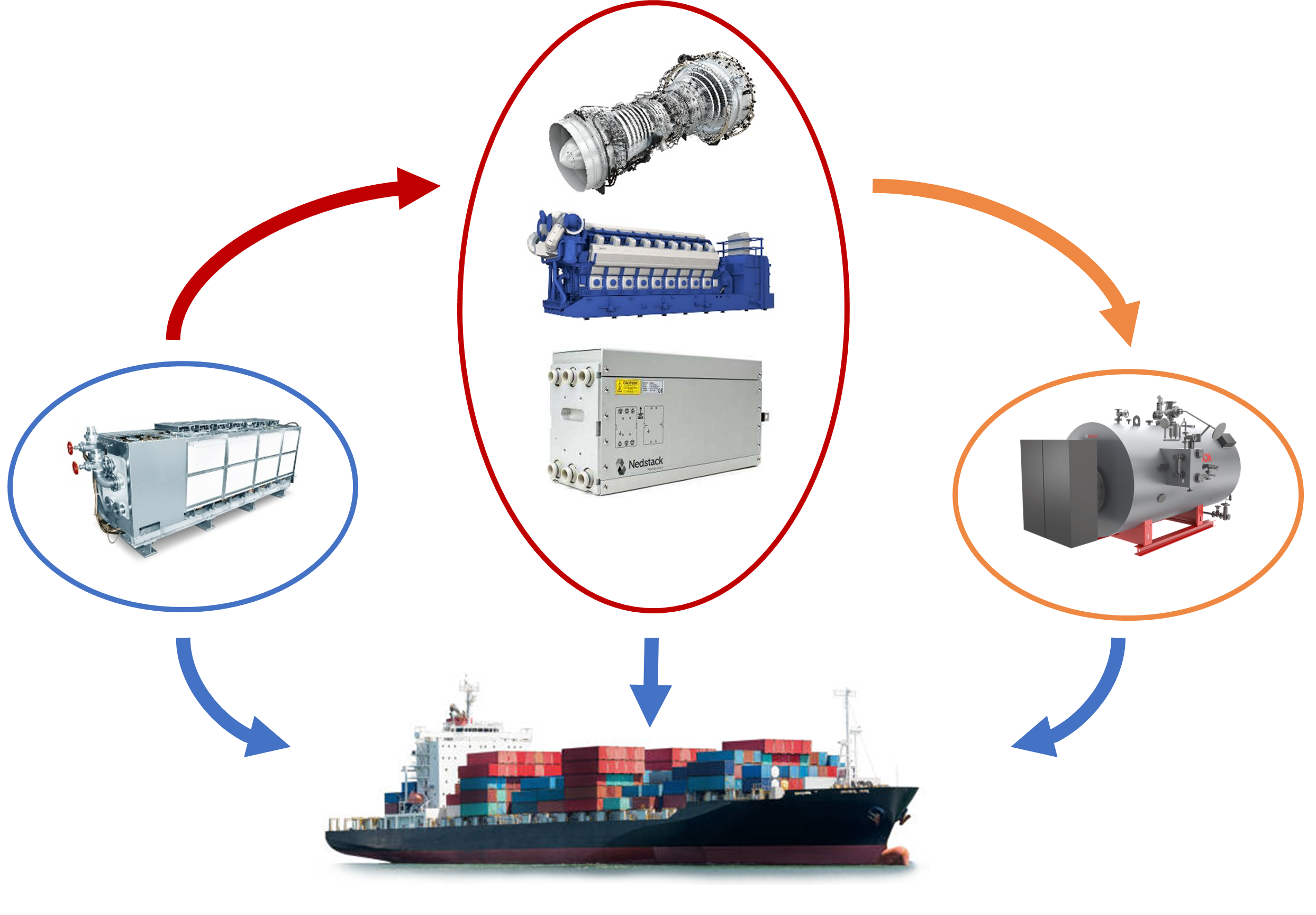
SOFC-based combined cycle systems in the maritime environment
Niek Goselink October 5th, 2023, 16h00, Lecture Hall E
This presentation will focus on the current state of my PhD research, into the application of solid oxide fuel cells (SOFCs) within combined cycle systems on board ships. The SOFC has been recognized as one of the promising technologies to reduce GHG emissions. However, this type of fuel cell comes with its challenges that have to be overcome before it actually can be applied on board a ship. The integration of an SOFC with bottoming/topping cycles could address some of these challenges. In this talk, an analysis of the current state of SOFC-combined cycle research in the maritime environment is addressed, together with an initial thermodynamic analysis of a combined SOFC-PEMFC cycle system.
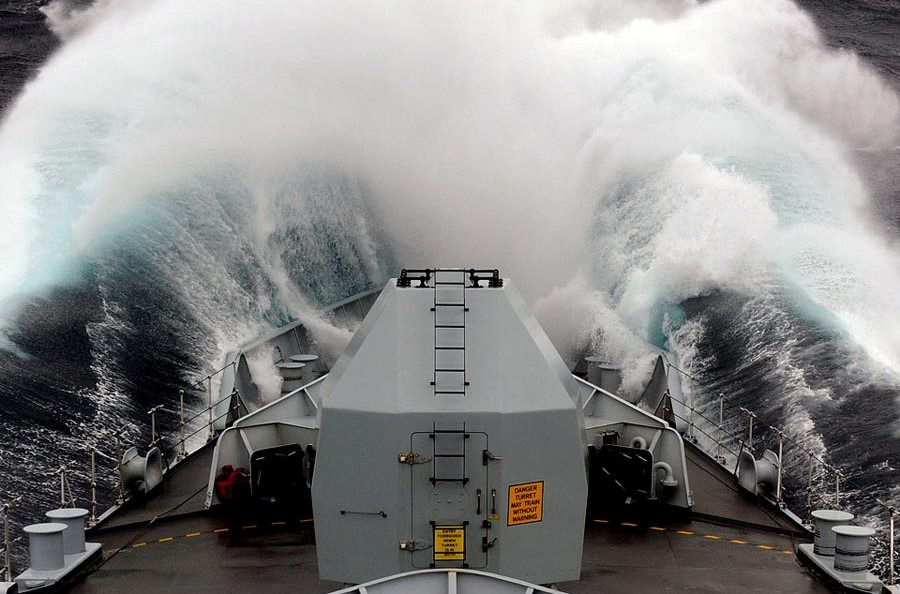
Prediction of wave impact load statistics on maritime structures
Sanne van Essen September 21th, 2023, 16h00, Lecture Hall J
Predicting wave impact design loads is crucial for the safety and performance of maritime structures, as demonstrated by several recent accidents. However, it is also challenging due to the complexity and rarity of the wave impact events. Highly nonlinear responses such as wave impacts require a fidelity level that can only be achieved with expensive CFD or experiments. Impact loads are also rare; they do not occur every wave encounter. In order to evaluate their statistics, we therefore need to evaluate long durations. With the present computational power, it is not practically feasible to evaluate several times the lifetime of the ship with high-fidelity tools. We therefore need some kind of multi-fidelity modelling, combining the benefits of fast low-fidelity tools and accurate high-fidelity tools. Existing multi-fidelity methods are mainly suitable for prediction of weakly non-linear responses, or are very computationally expensive. A new event-based multi-fidelity method called ‘adaptive screening’ therefore combines elements of screening, multi-fidelity Gaussian Process Regression and adaptive sampling, to more efficiently predict highly non-linear loads with sparsely populated exceedance distributions. A simplified case study using second-order wave data shows that the new method predicts more accurate short-term design loads than the conventional methods, while also significantly reducing the required HF simulation time. The next step will be to validate the method against long duration wave impact experiments.

Methanol Sprays in Marine Internal Combustion Engines
Konstantinos Zoumpourlos September 21th, 2023, 16h00, Lecture Hall J
Methanol has emerged as a cost-effective and scalable alternative fuel for the maritime sector. However, the utilization of methanol in marine engines is hindered by the lack of understanding on its spray characteristics, especially under port fuel injection (PFI) conditions. This research aims to investigate the characteristics of methanol sprays under conditions relevant to marine engines. The proposed methodology evaluates the effectiveness of state-of-the-art computational fluid dynamics (CFD) models in simulating PFI conditions. The CFD models leverage the Lagrangian-Eulerian (LE) coupling method within the Unsteady Reynolds Averaged Navier Stokes (URANS) turbulence framework. Moreover, the predictive capabilities of different spray sub-models are investigated. The intention is to implement these spray sub-models into a validated 3D CFD engine model that will demystify the operation of methanol marine engines and, contribute to the decarbonization of the maritime industry.

Lifelong learning in maritime technology
Jack Reijmers September 14th, 2023, 16h00, Lecture Hall I
Picking up a PhD study with retirement in sight is far beyond career planning. However, it is an extraordinary experience to encounter the friction between the engineering and the scientific world. This mini-symposium aims at an overview of characteristic moments in time that led to this experience. Forty years in engineering results easily in a strong focus on a reliable solution in as little time as possible. Common sense in time and money driven projects collides often with the broad mindset required in the scientific environment. These collisions characterise 40 years in the engineering world and an additional 8 years in academia.